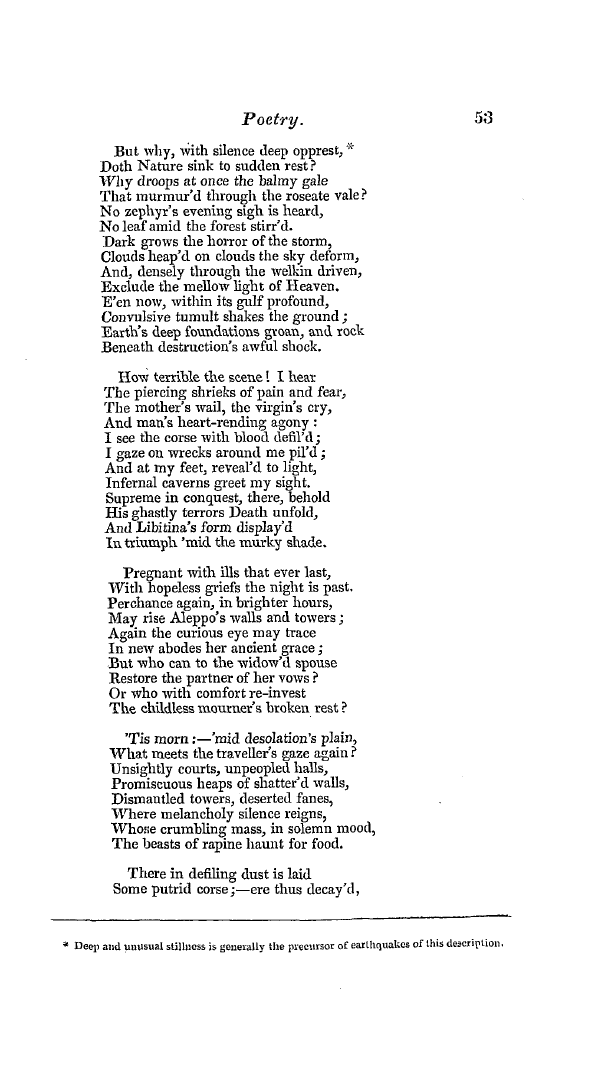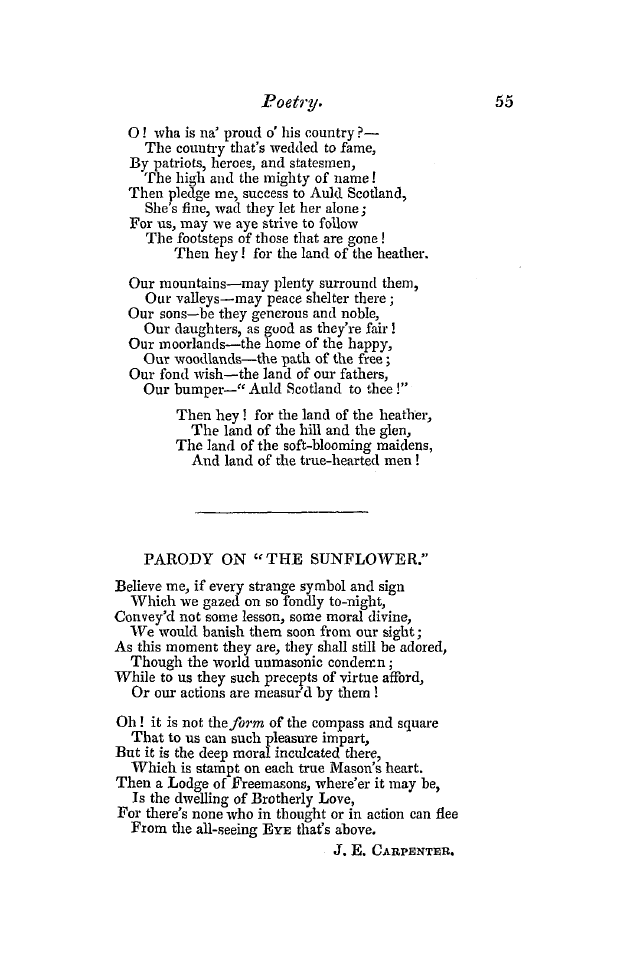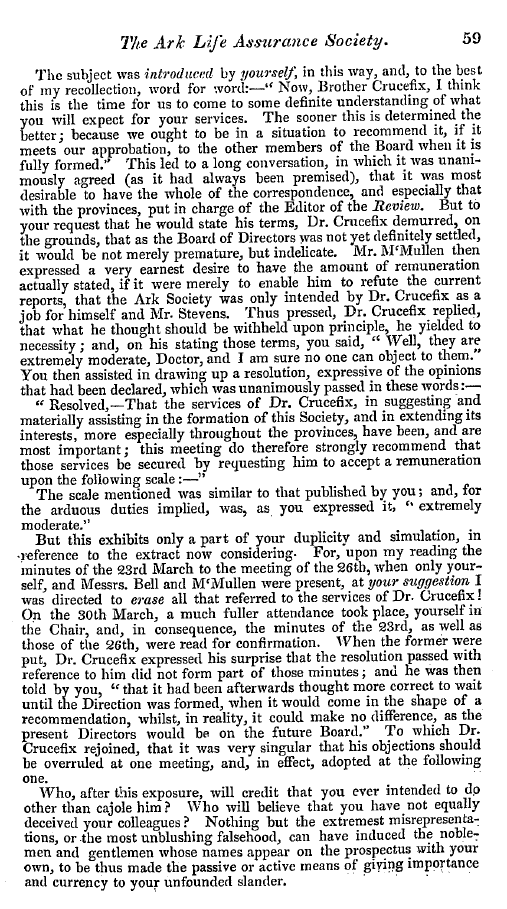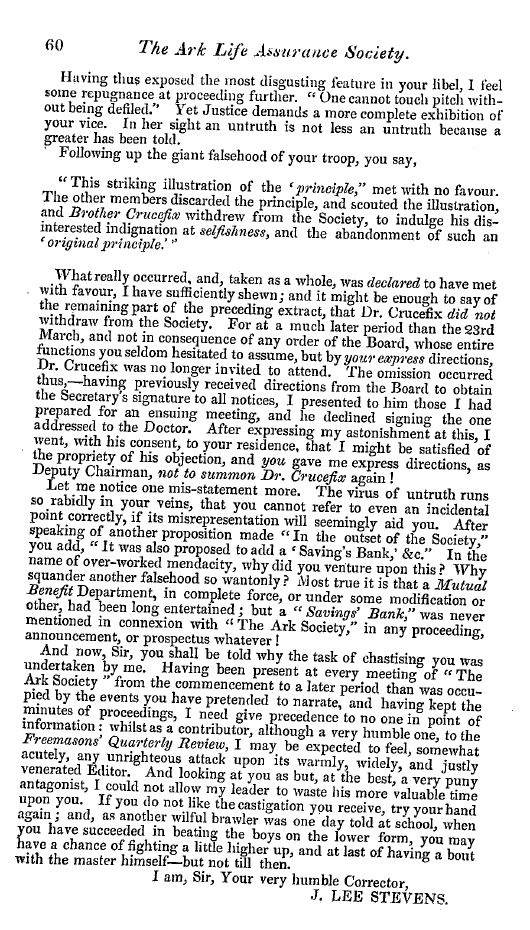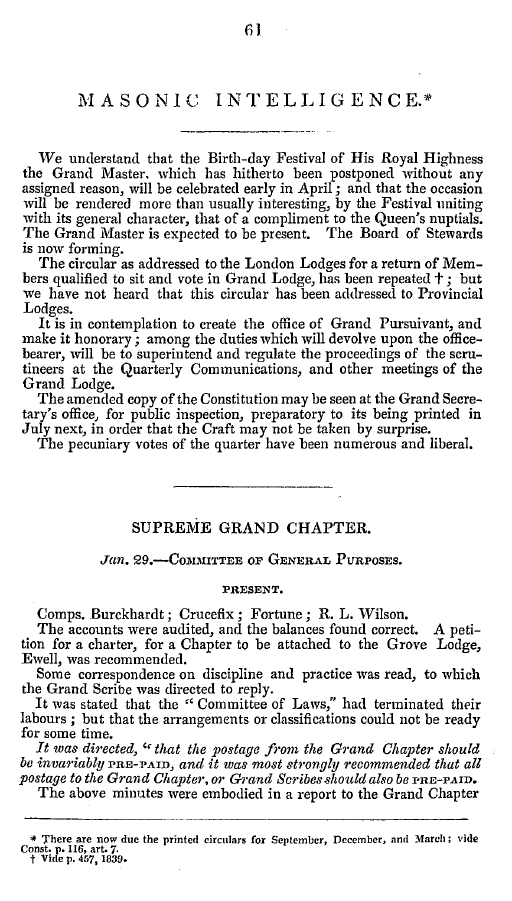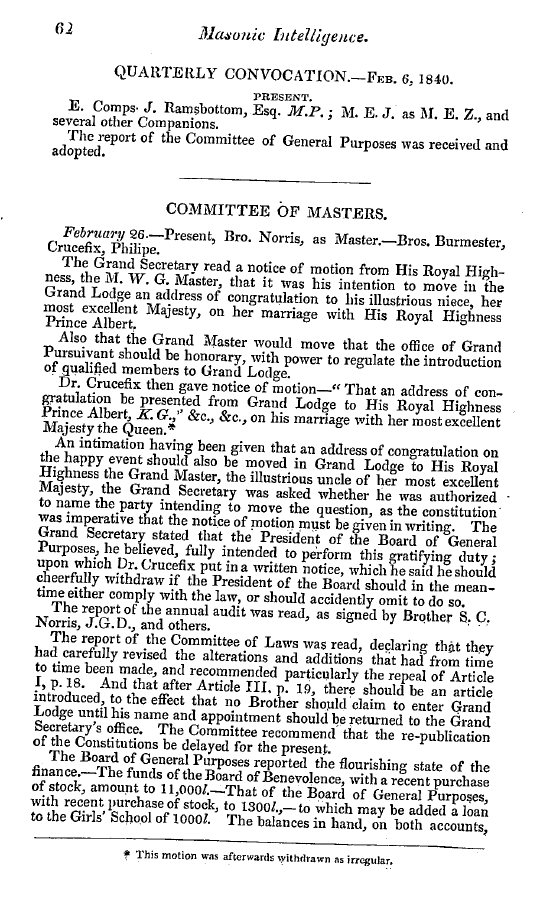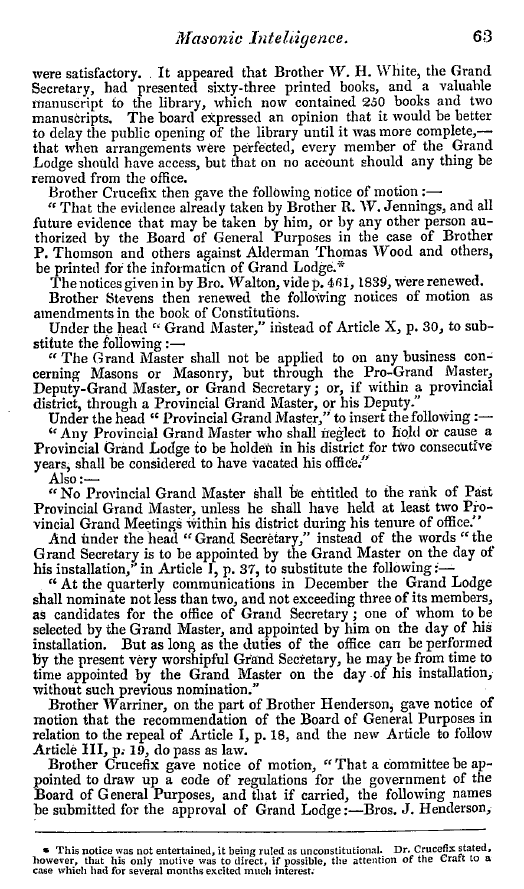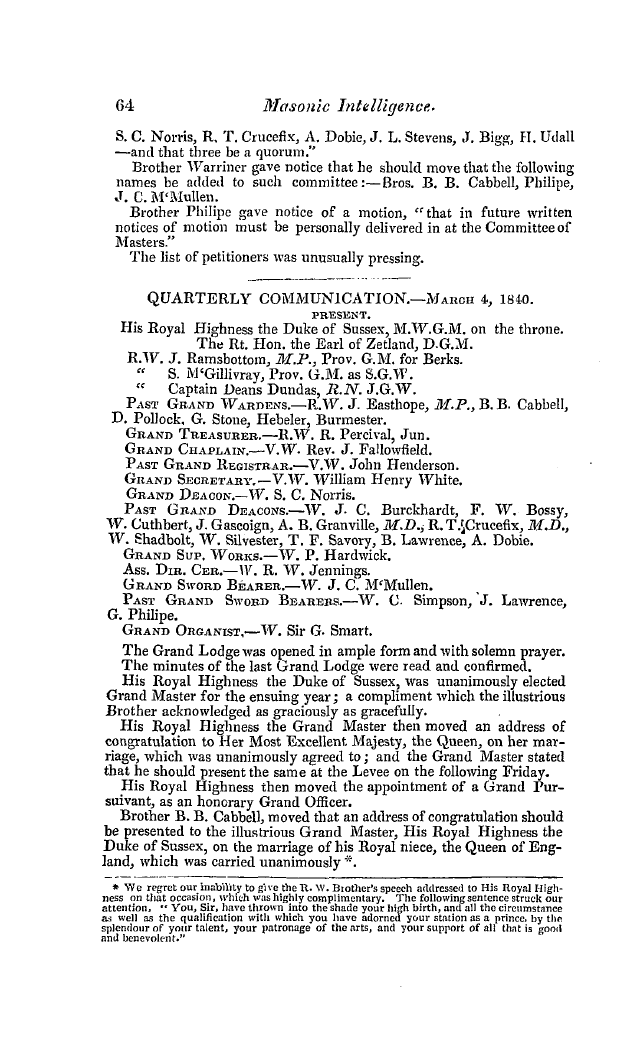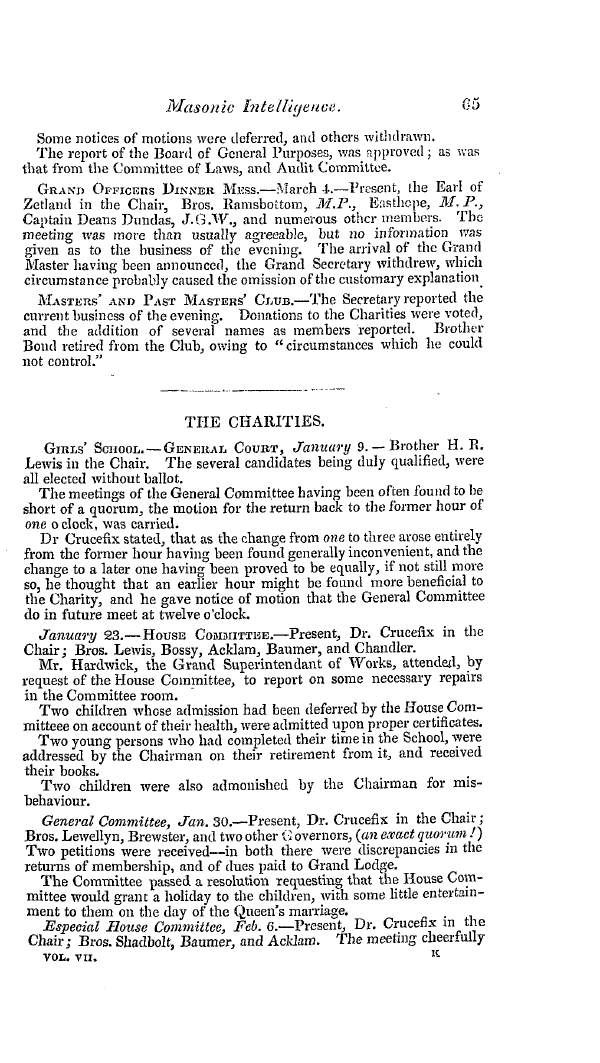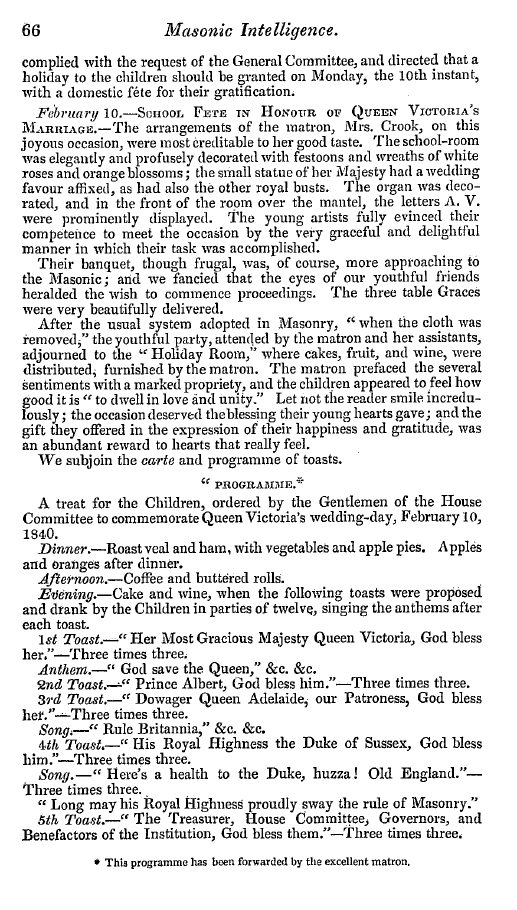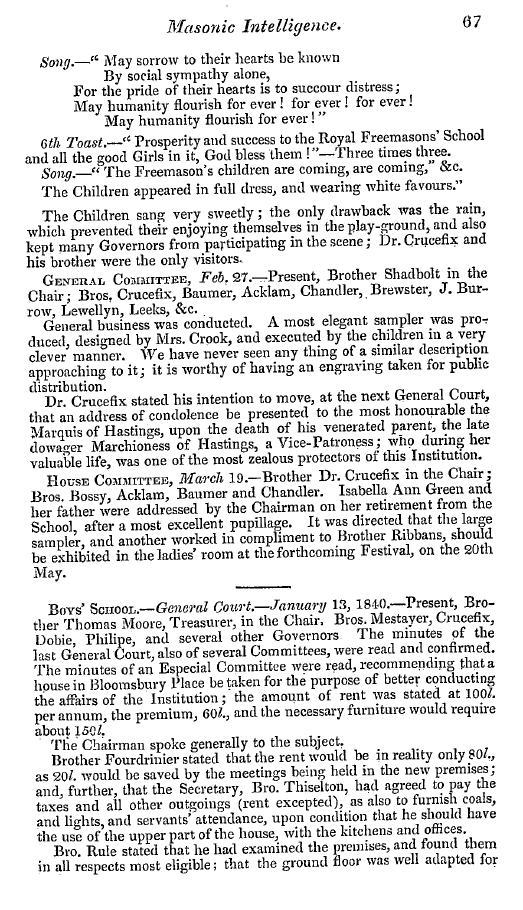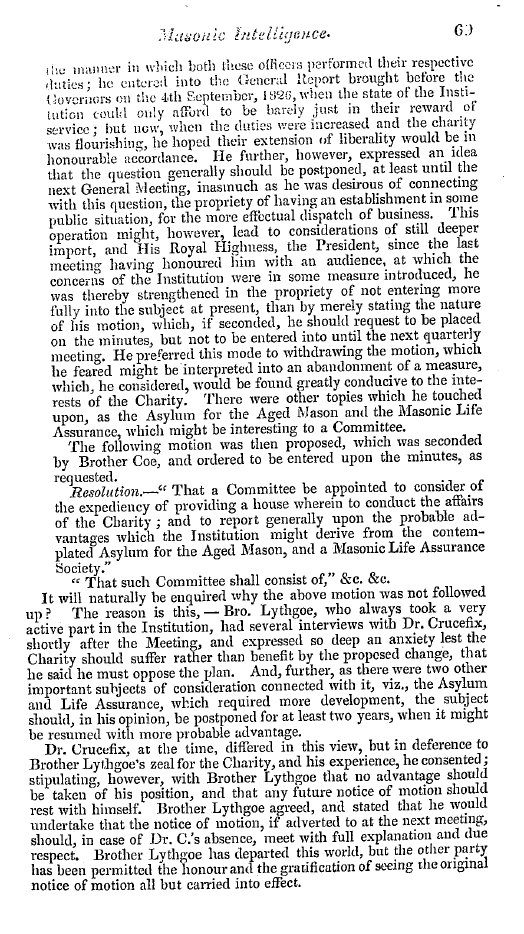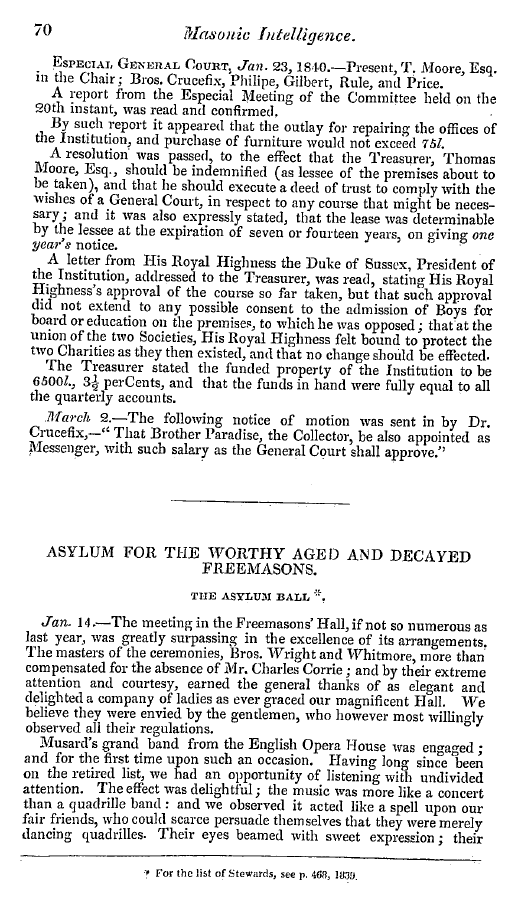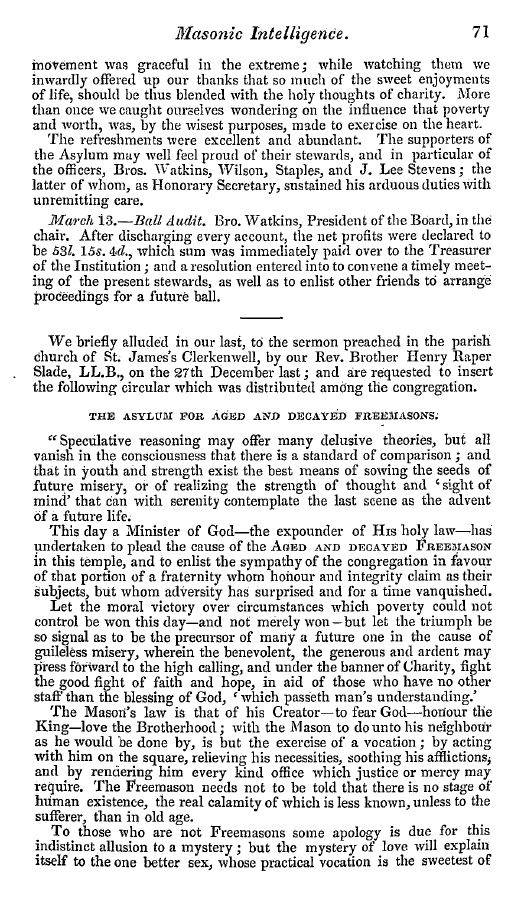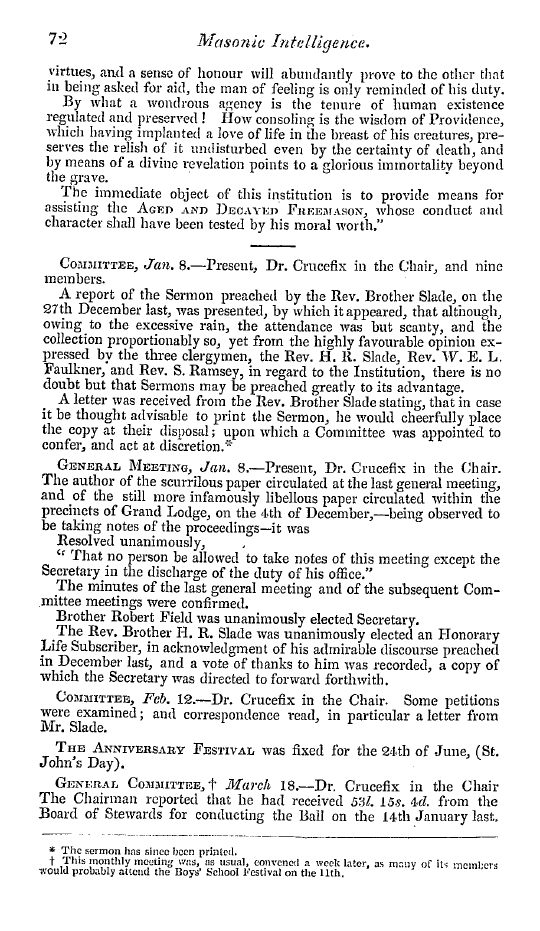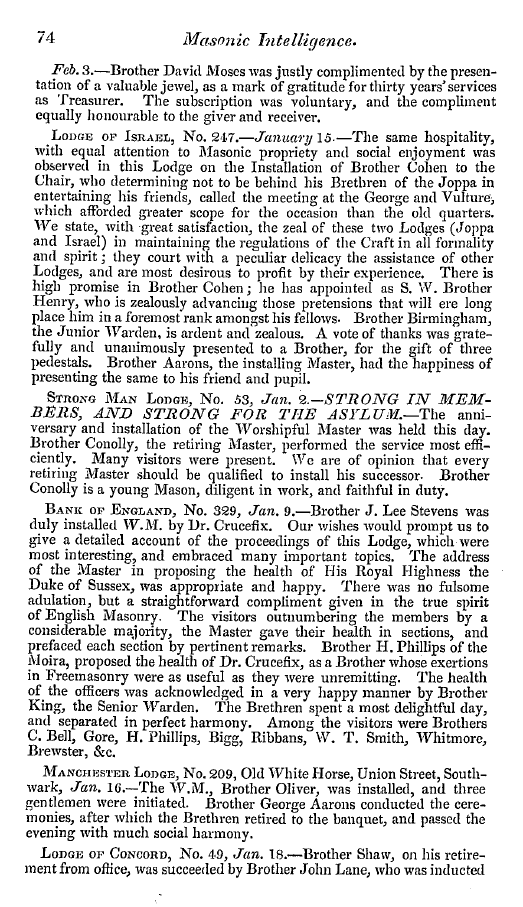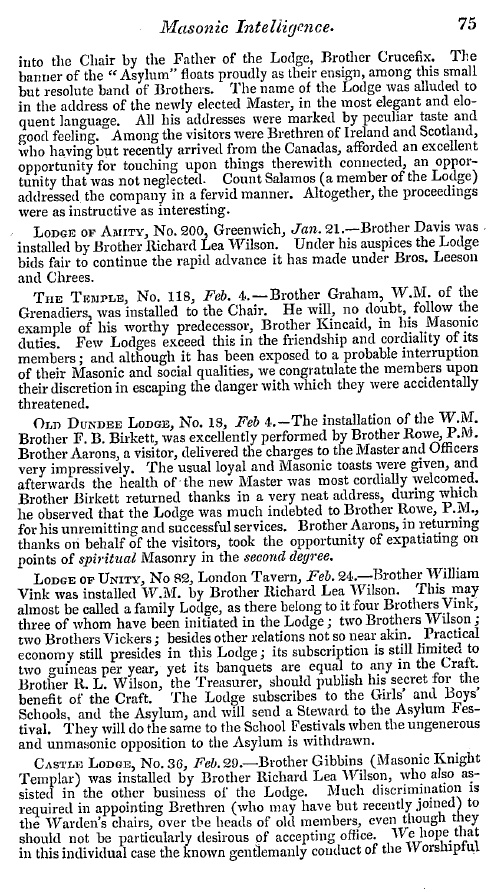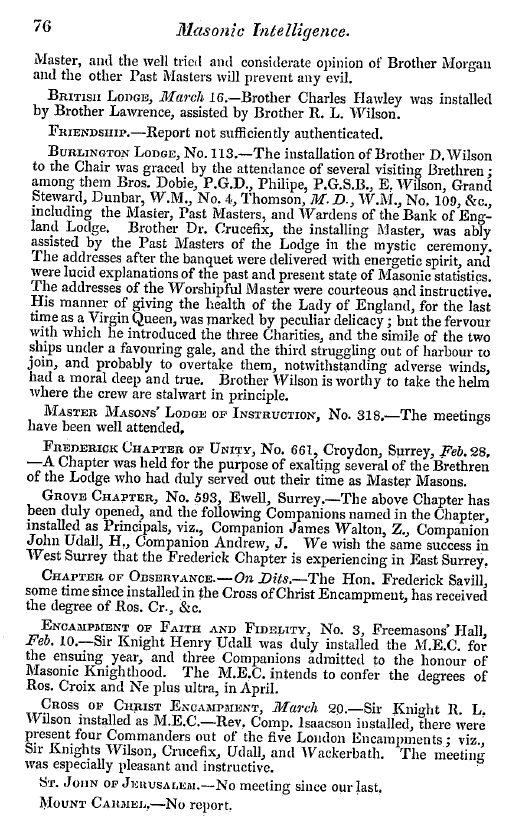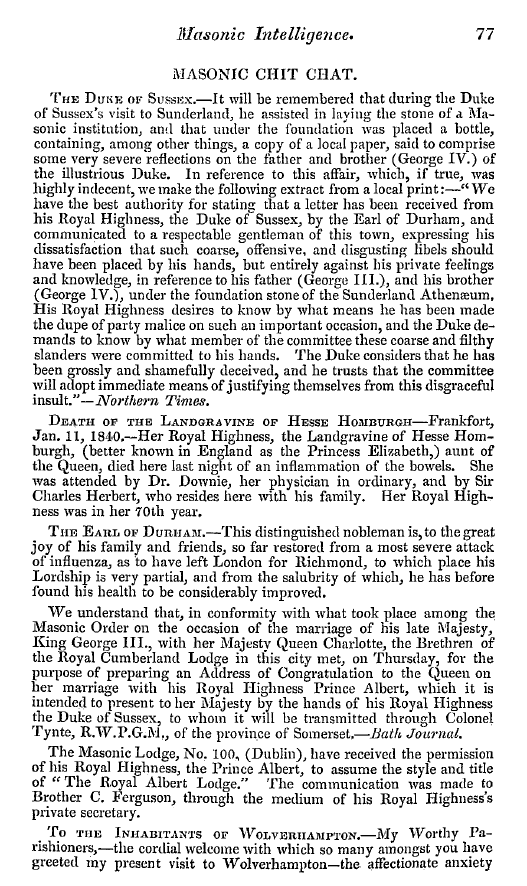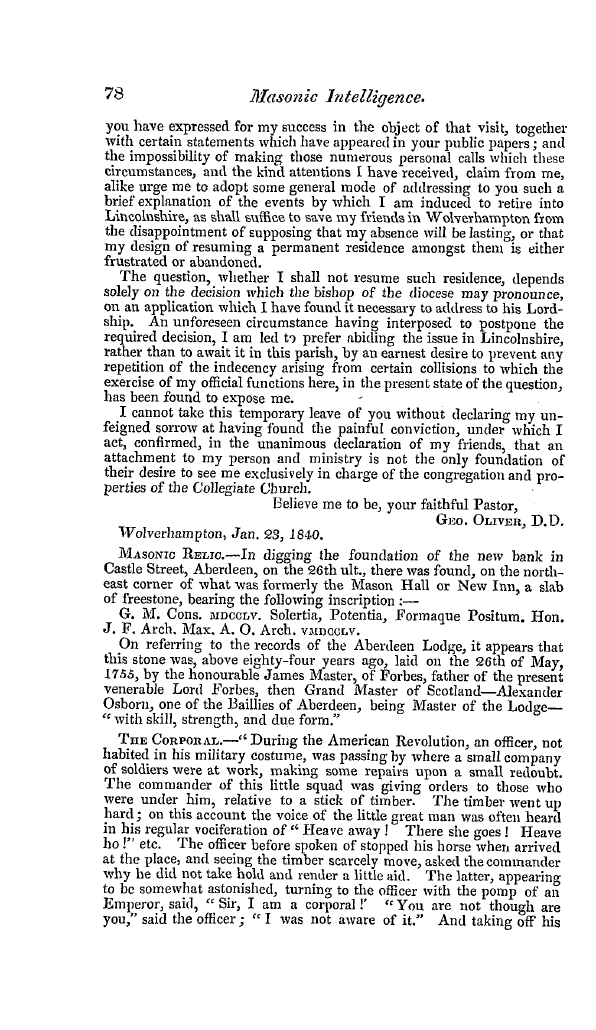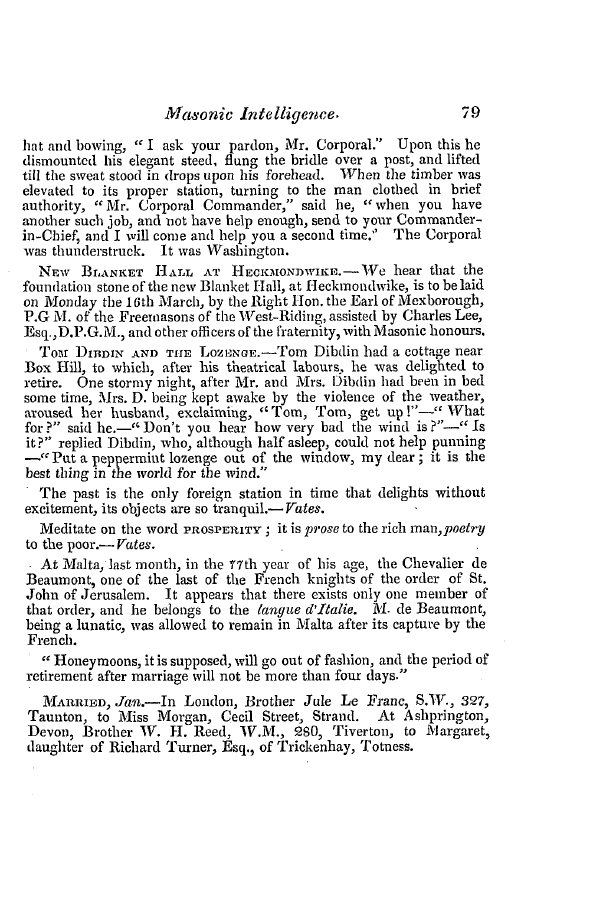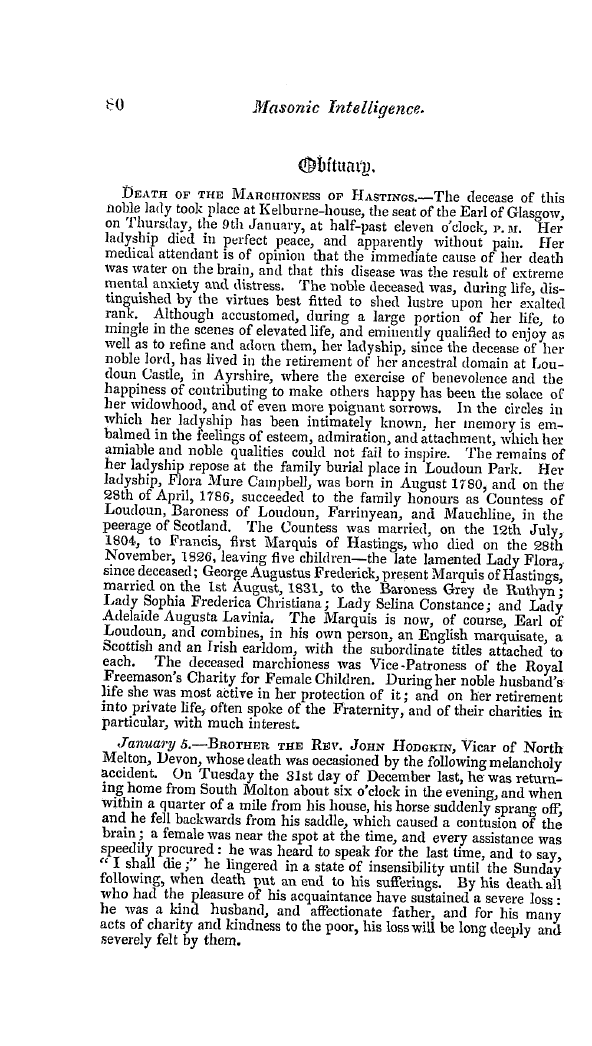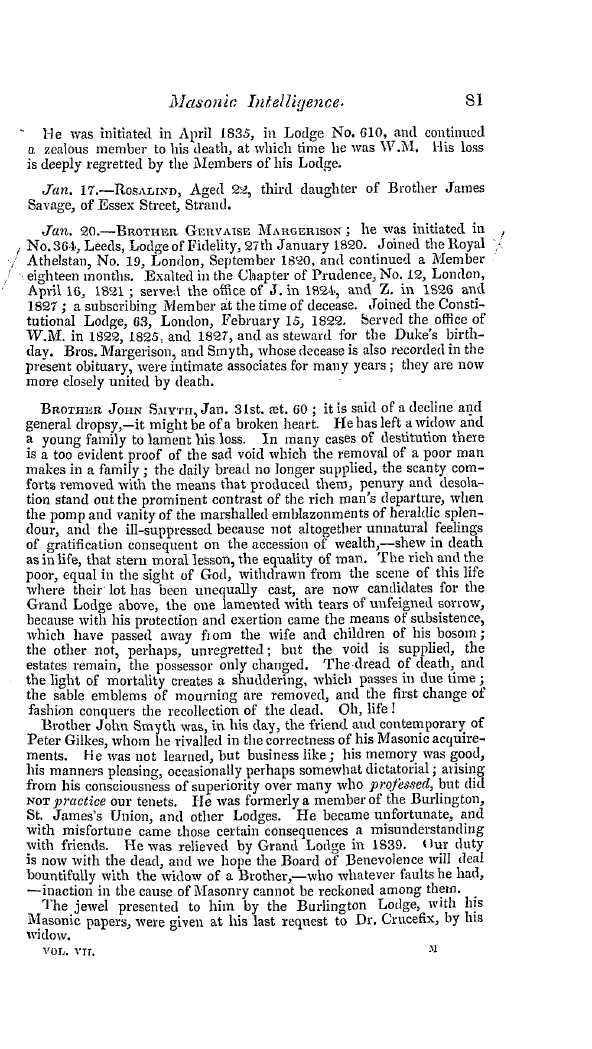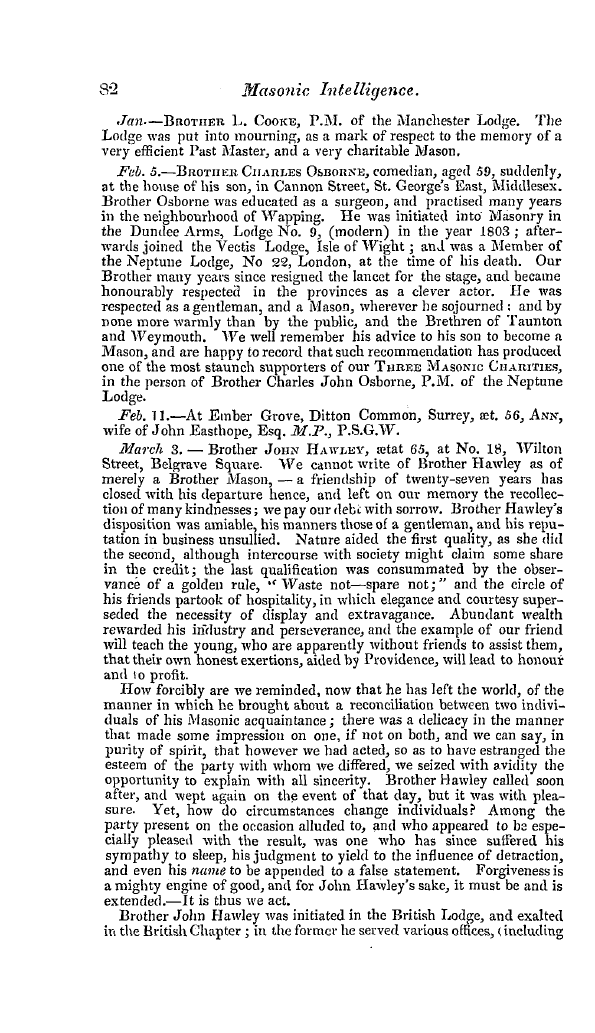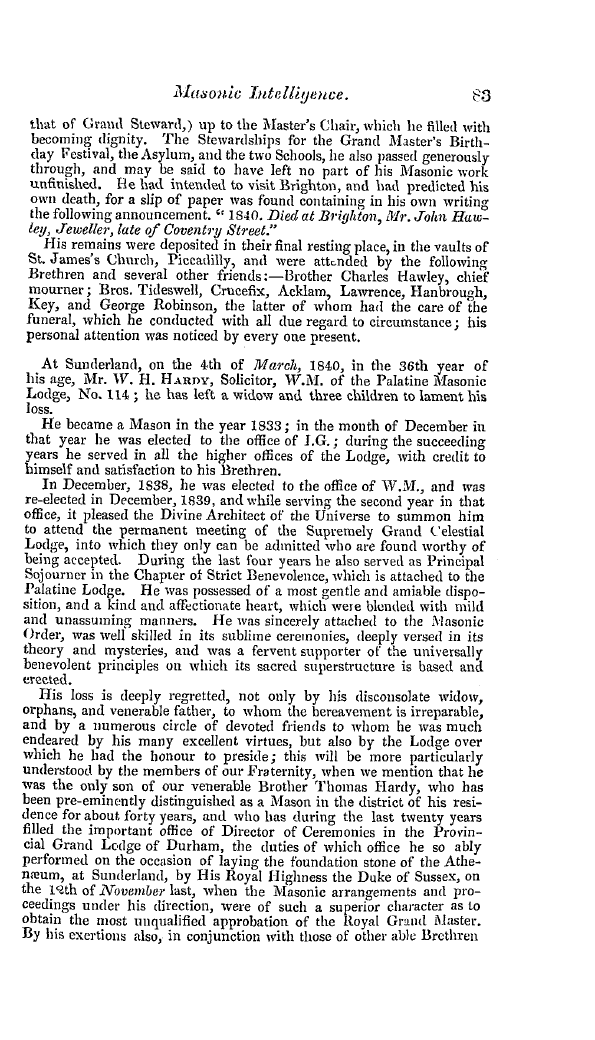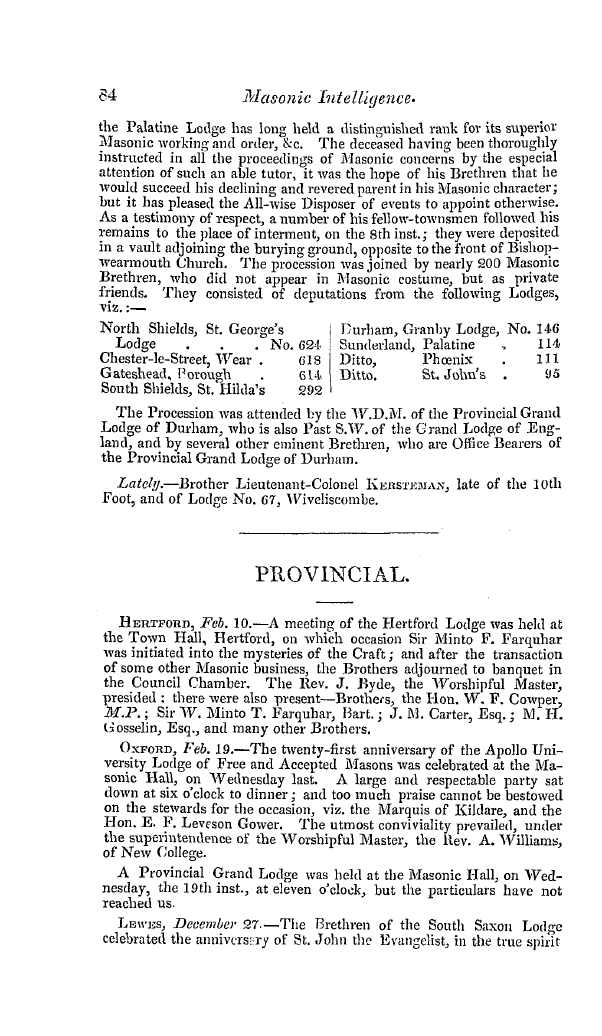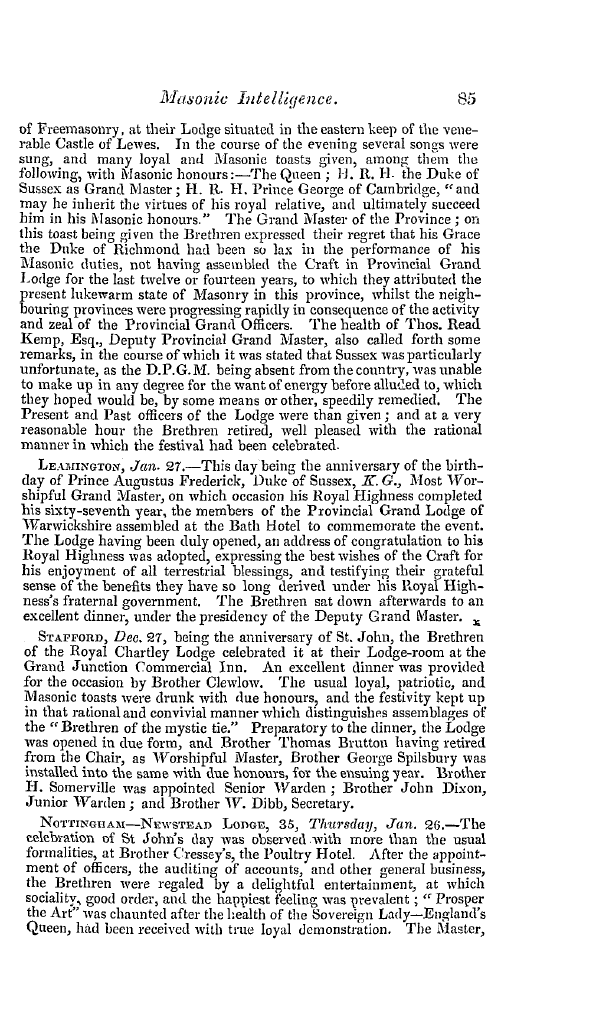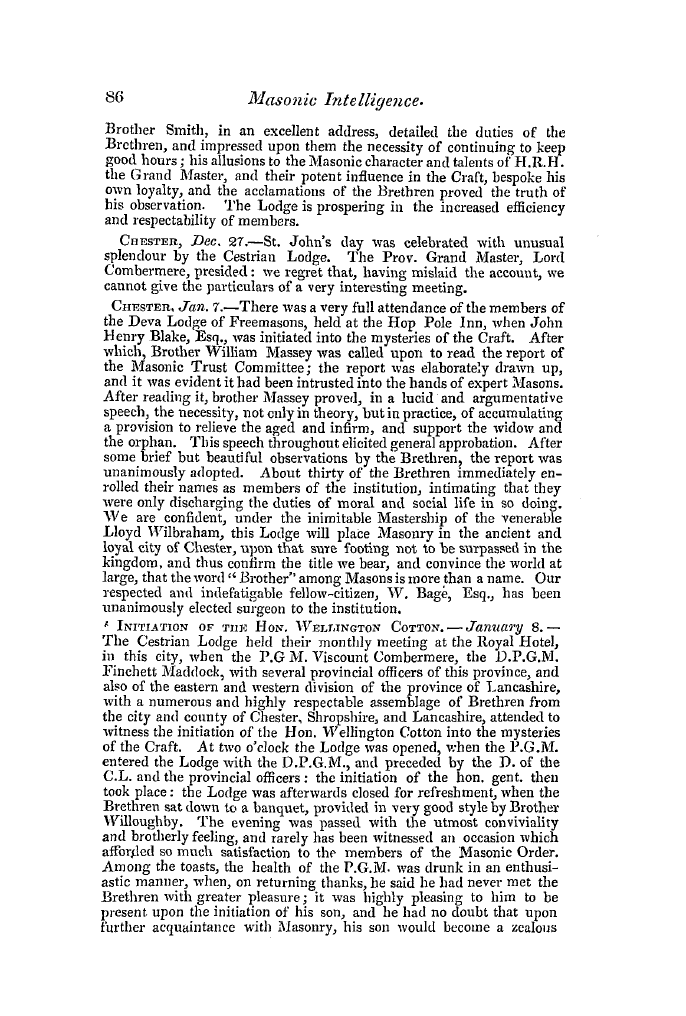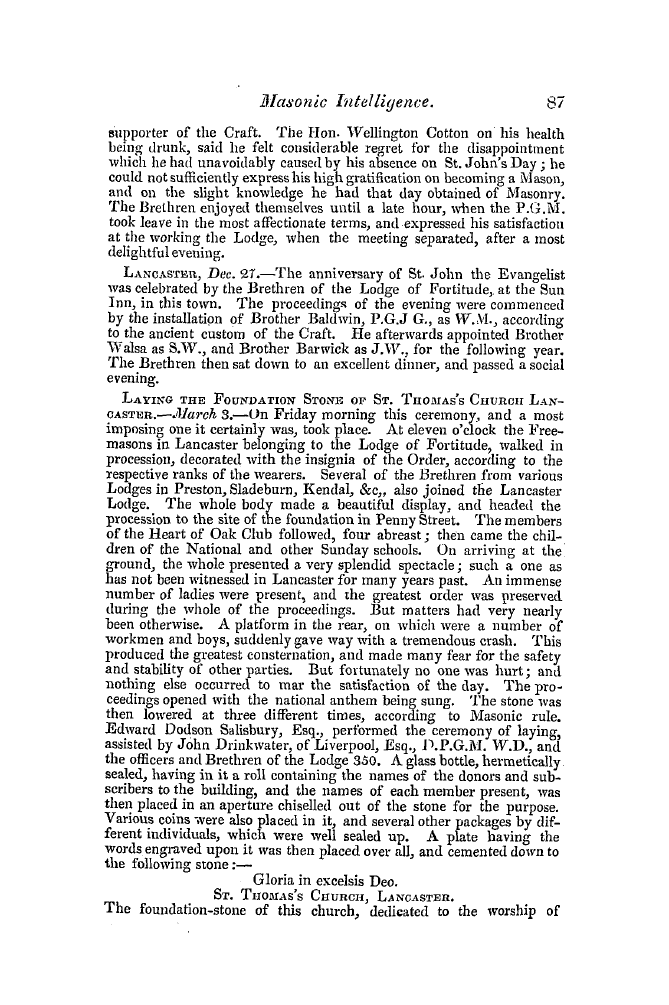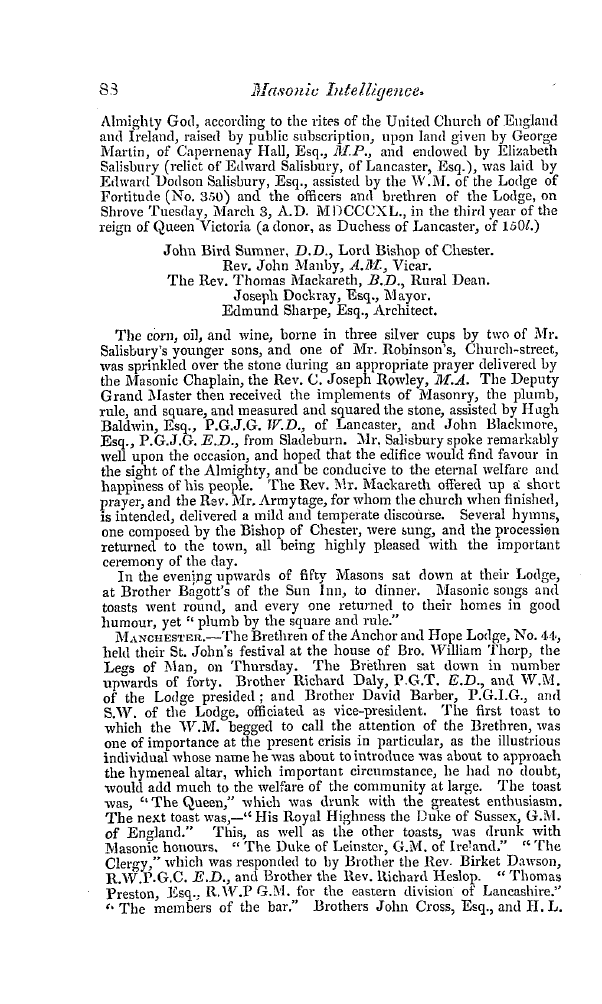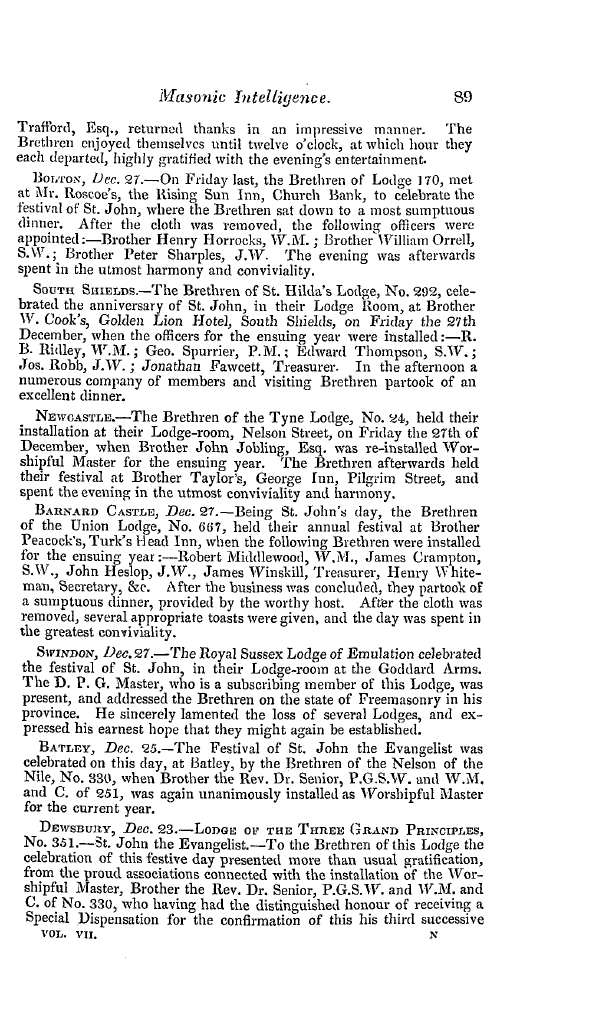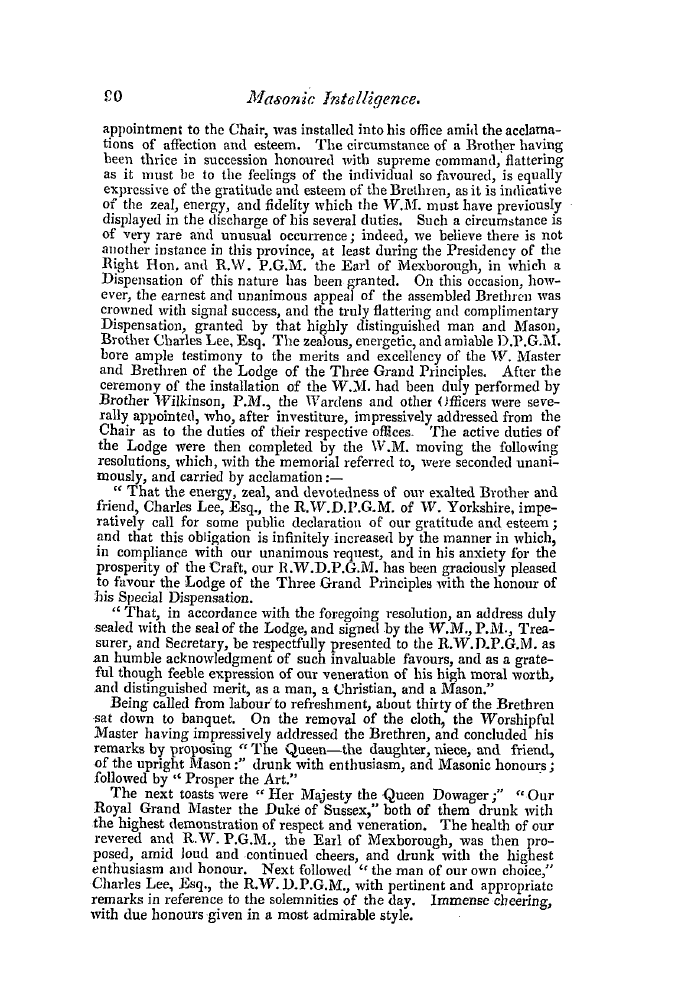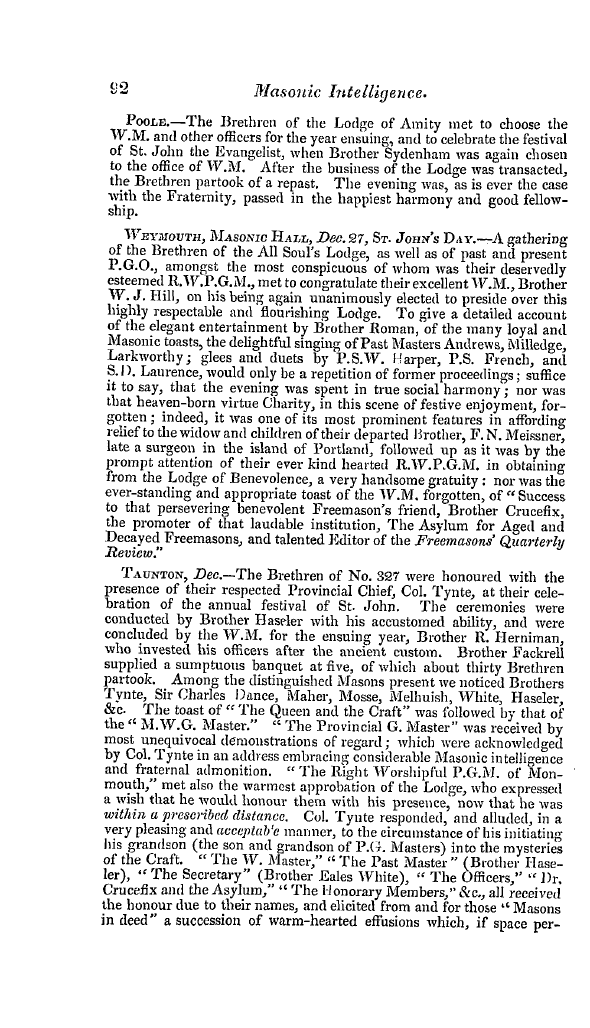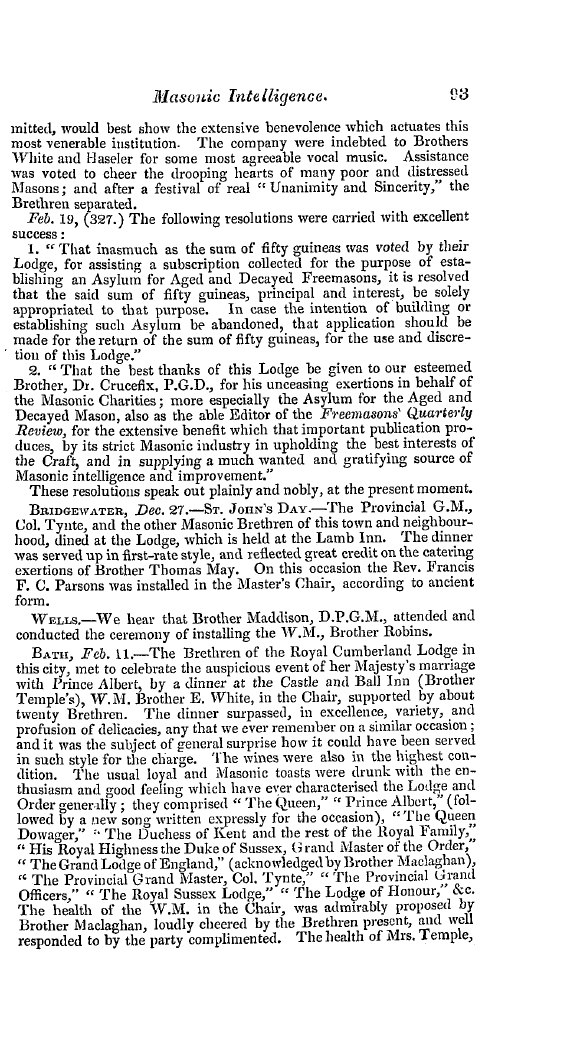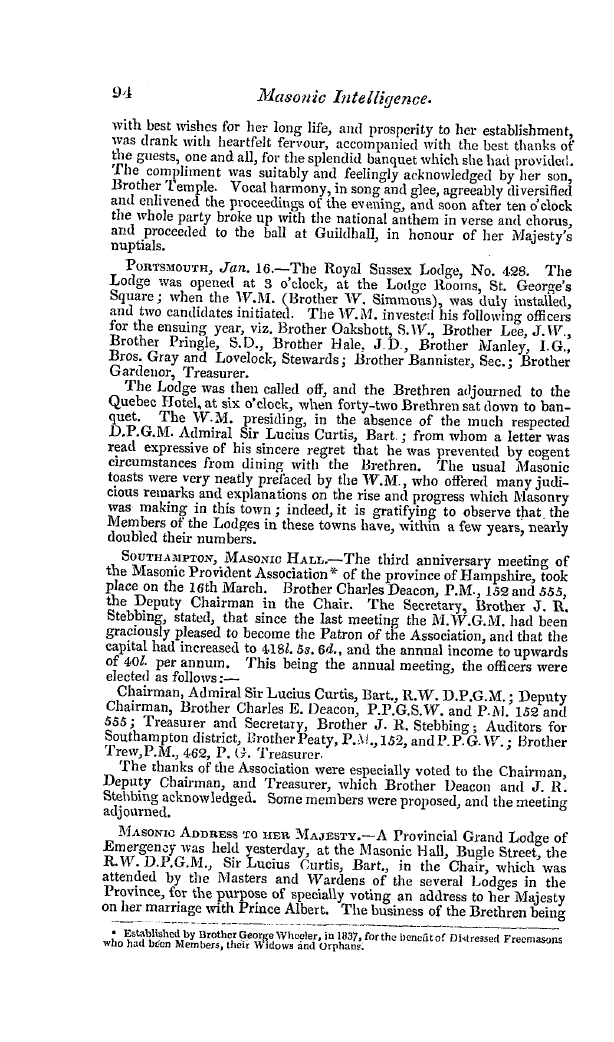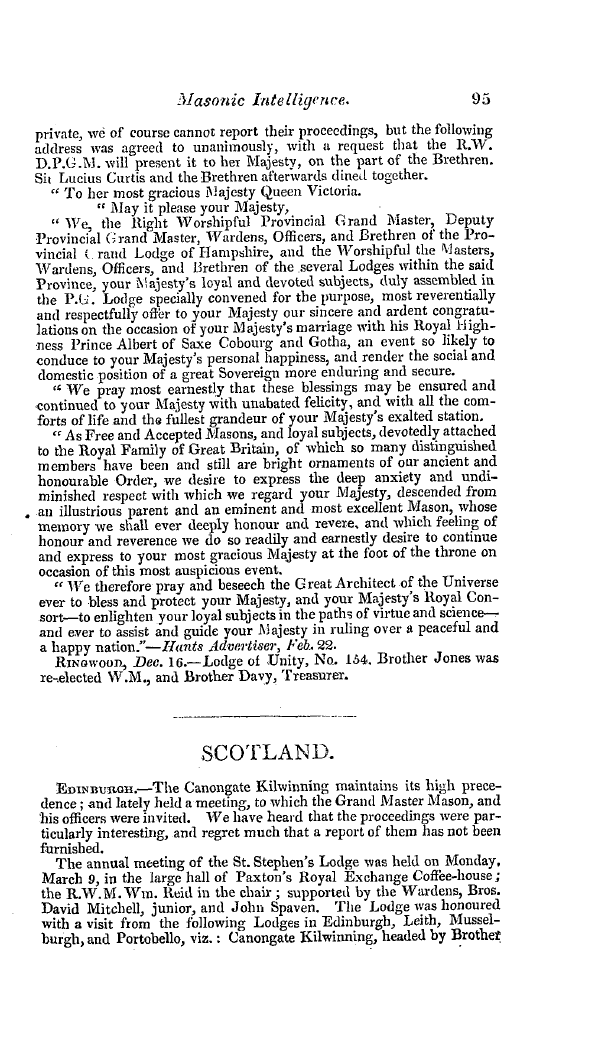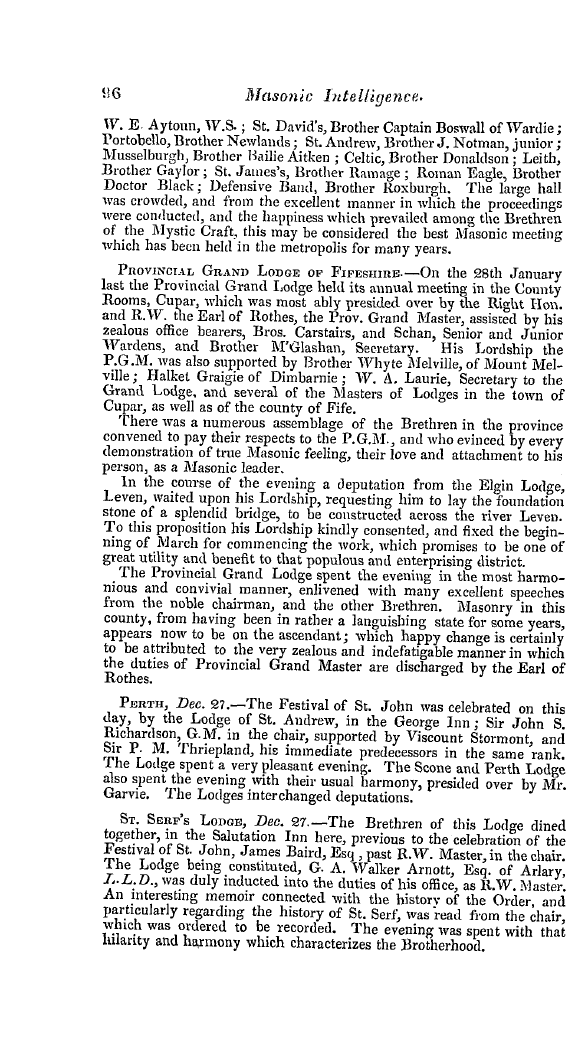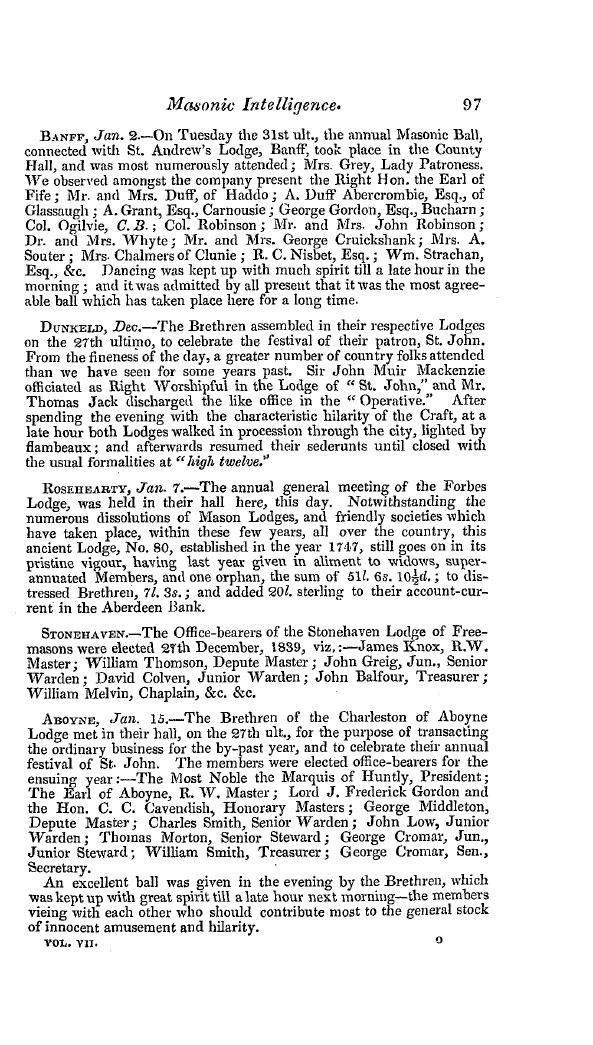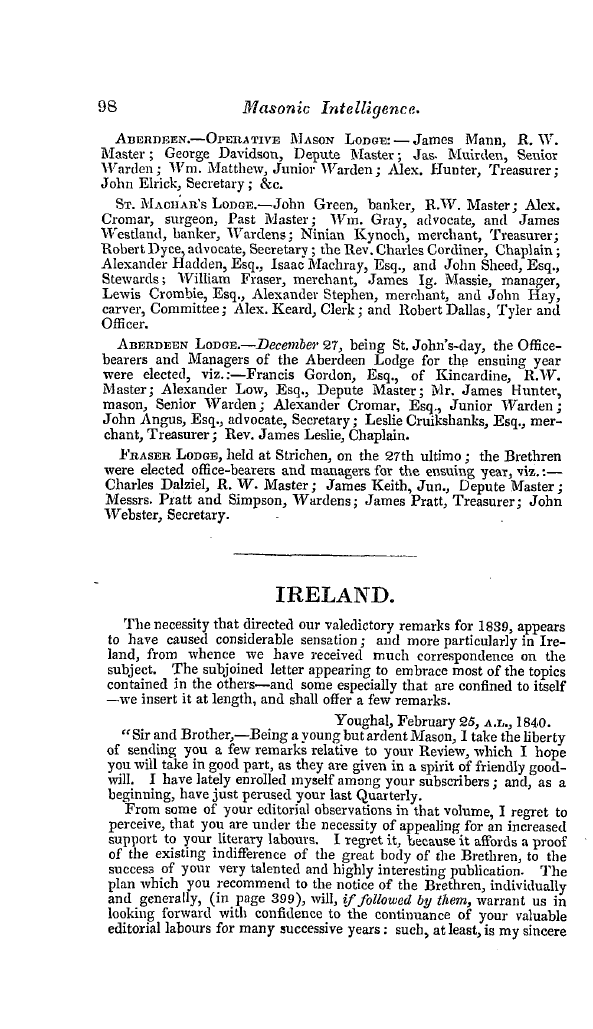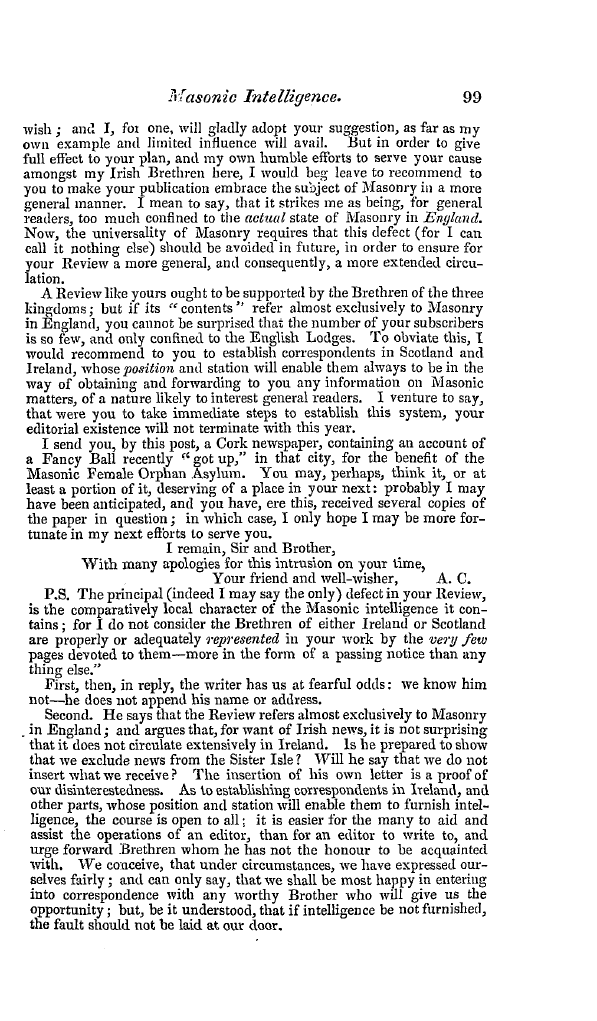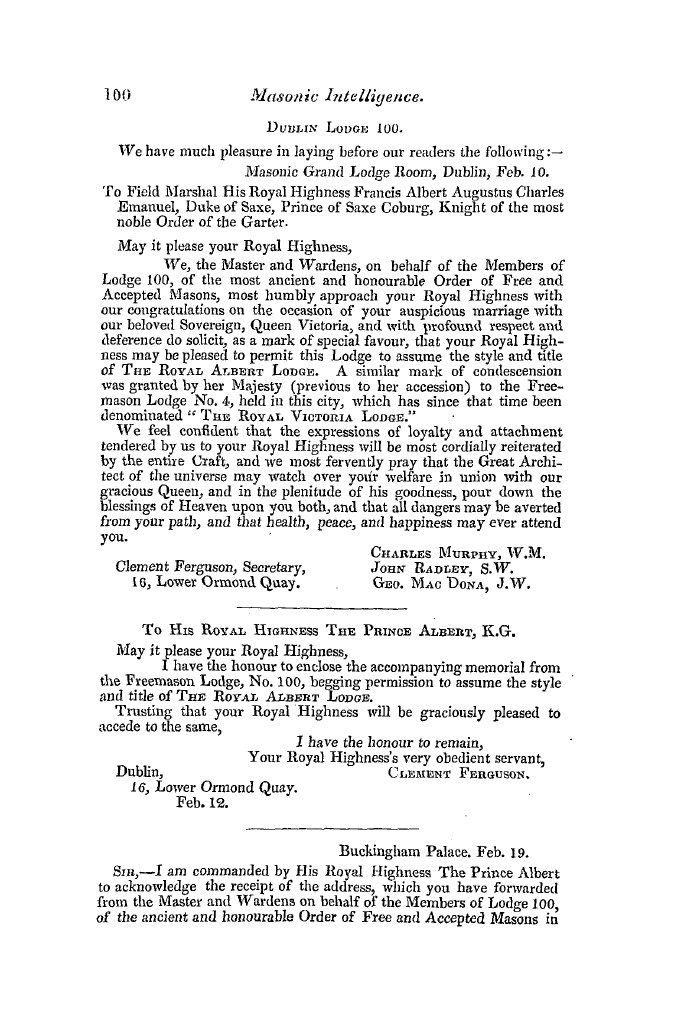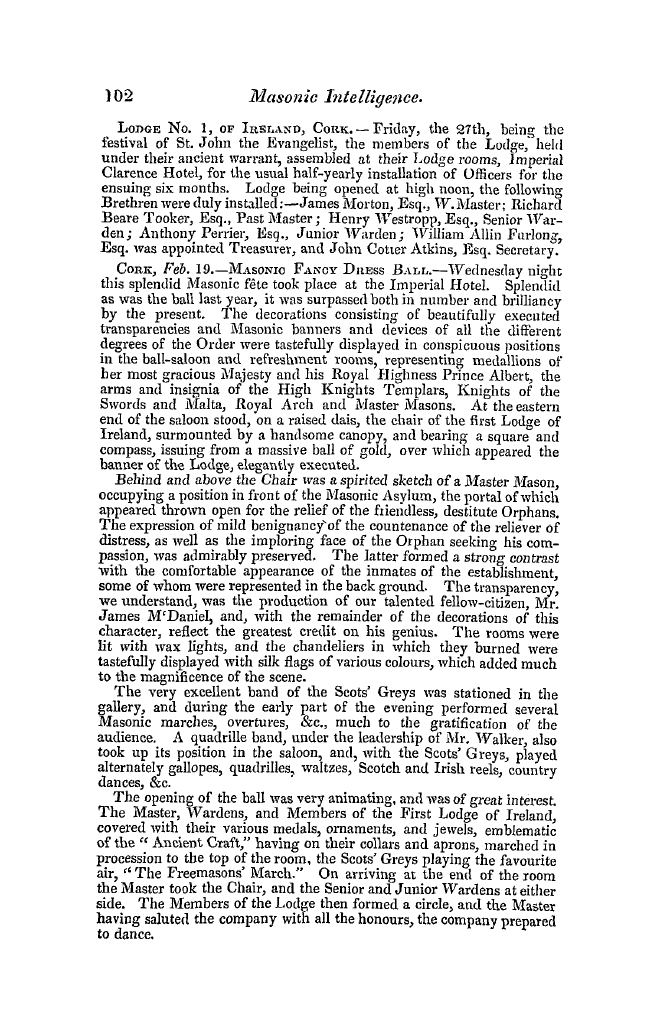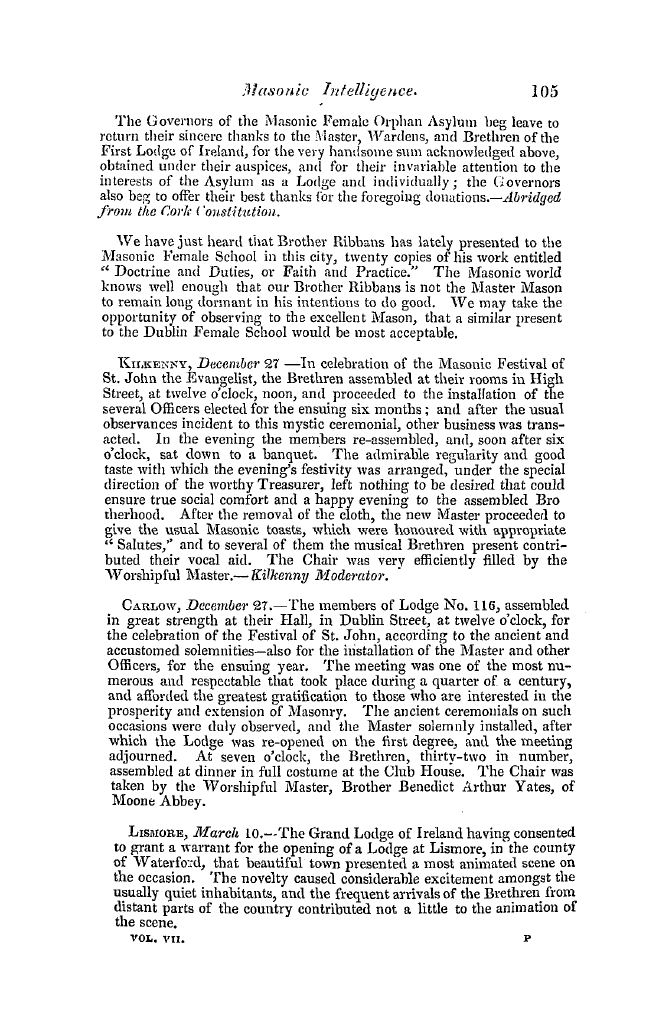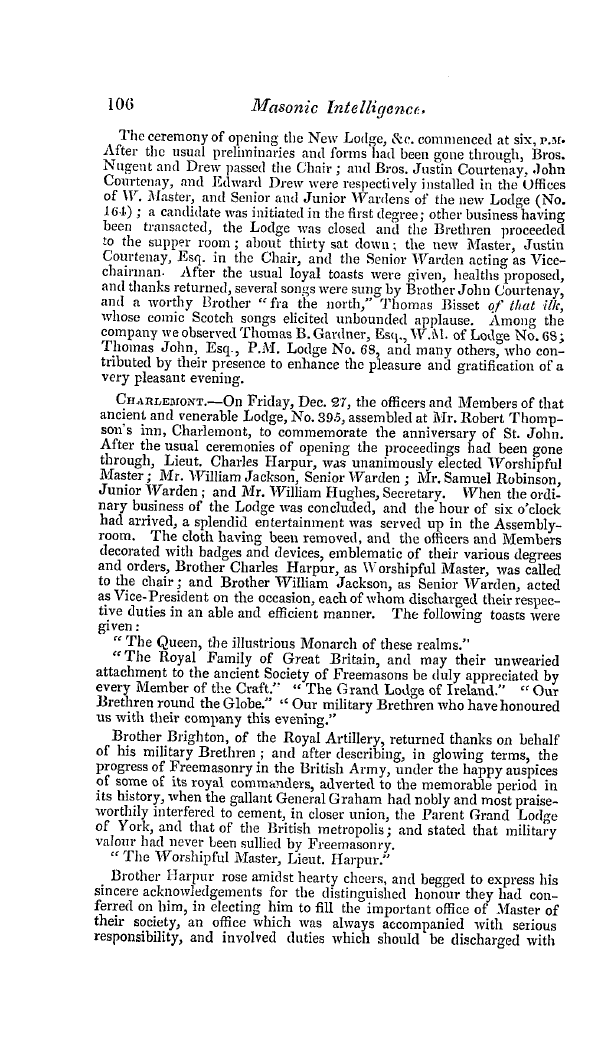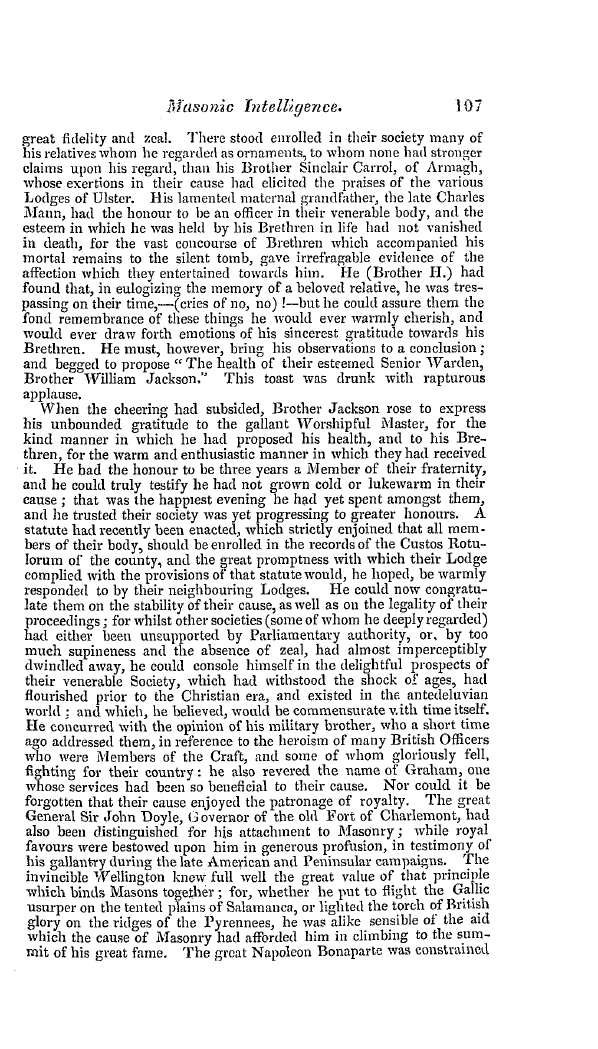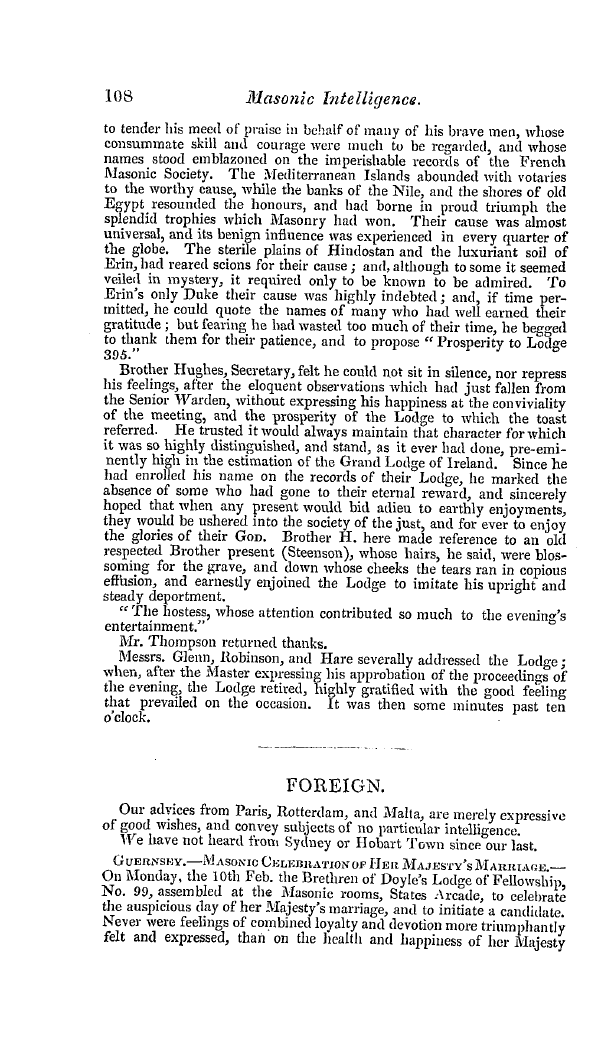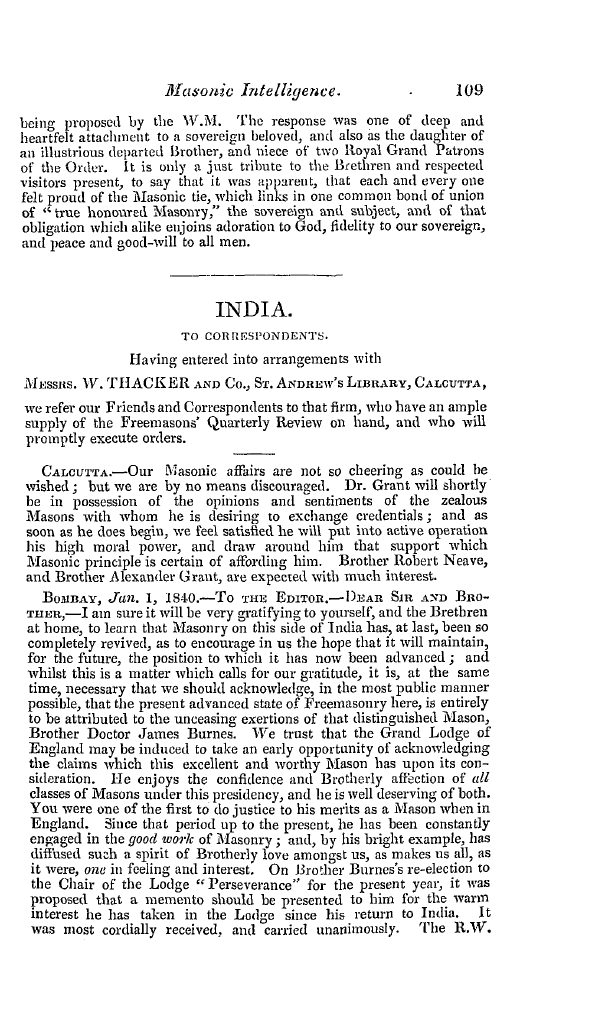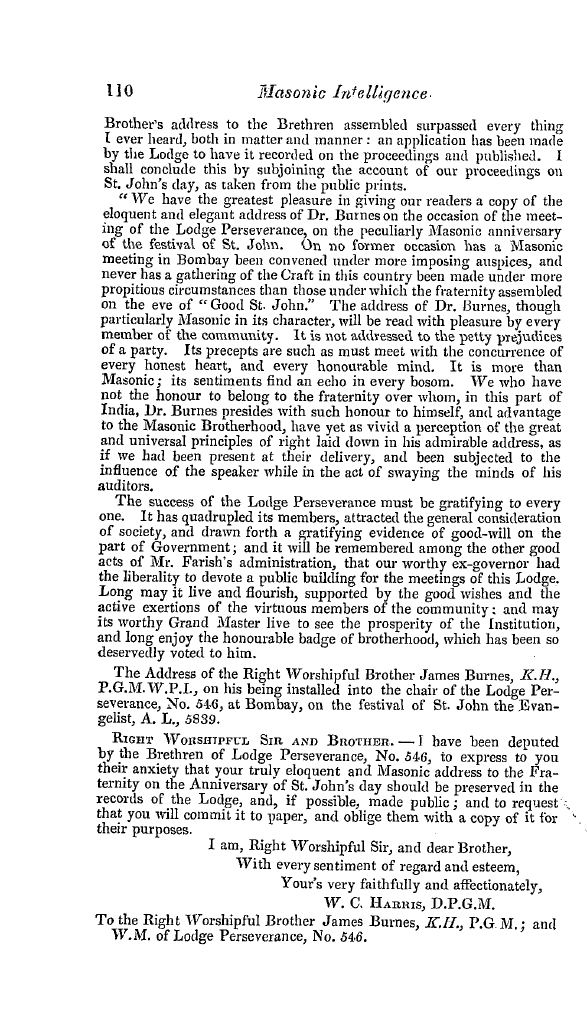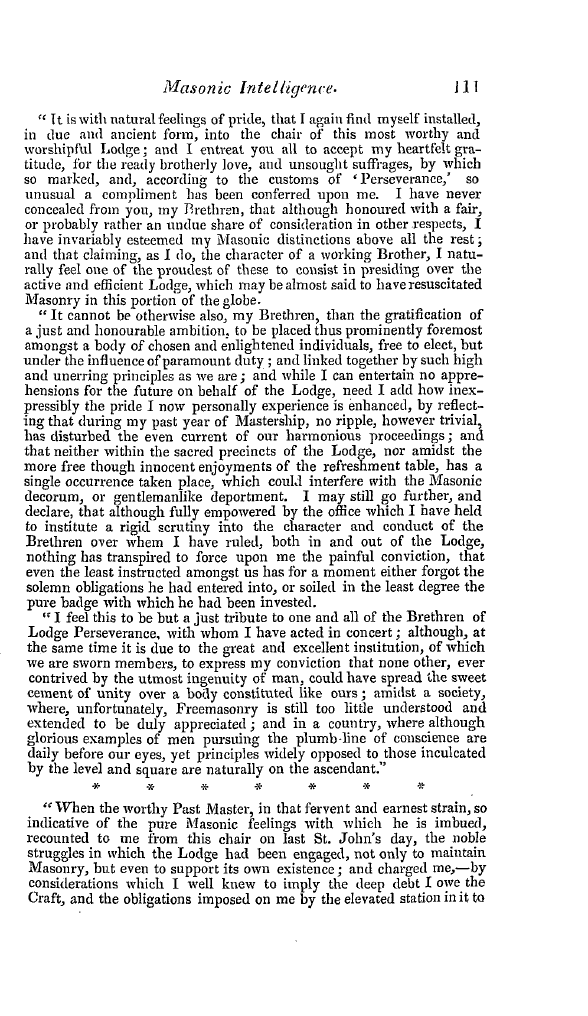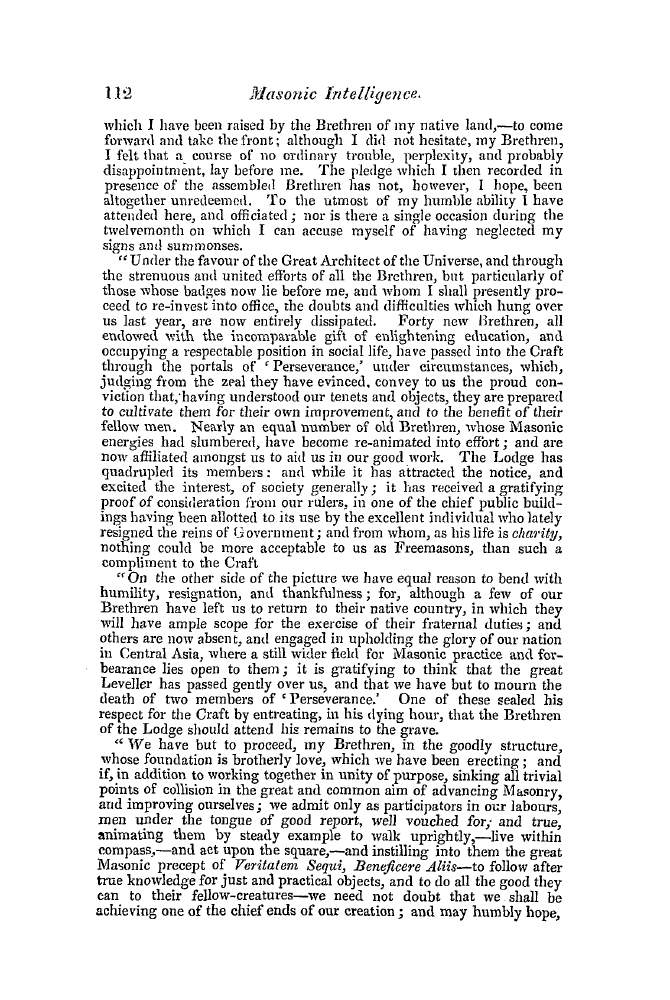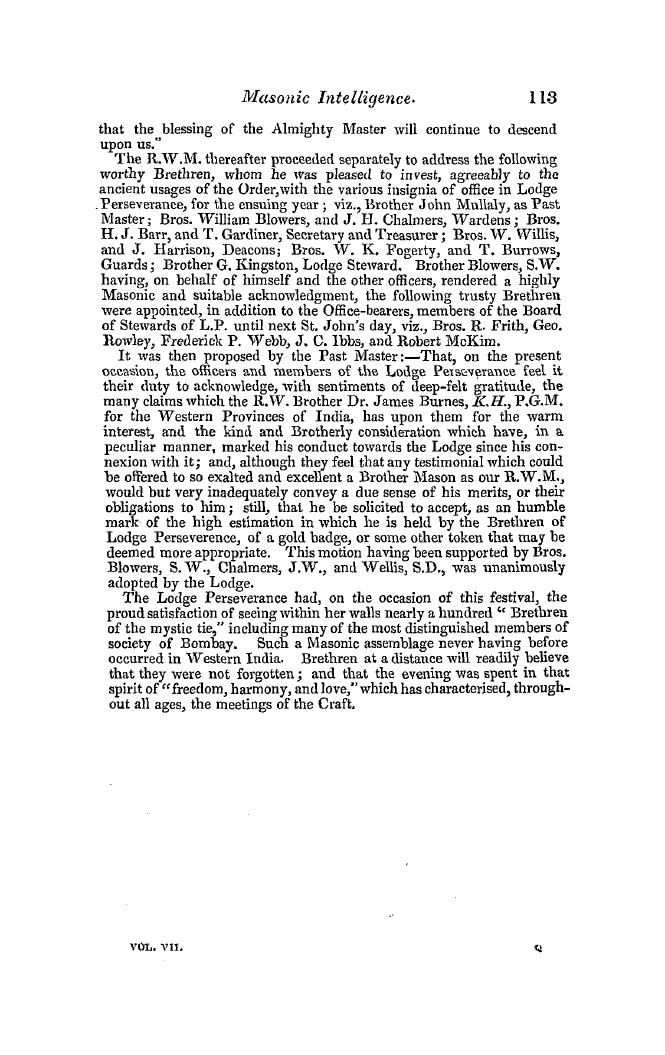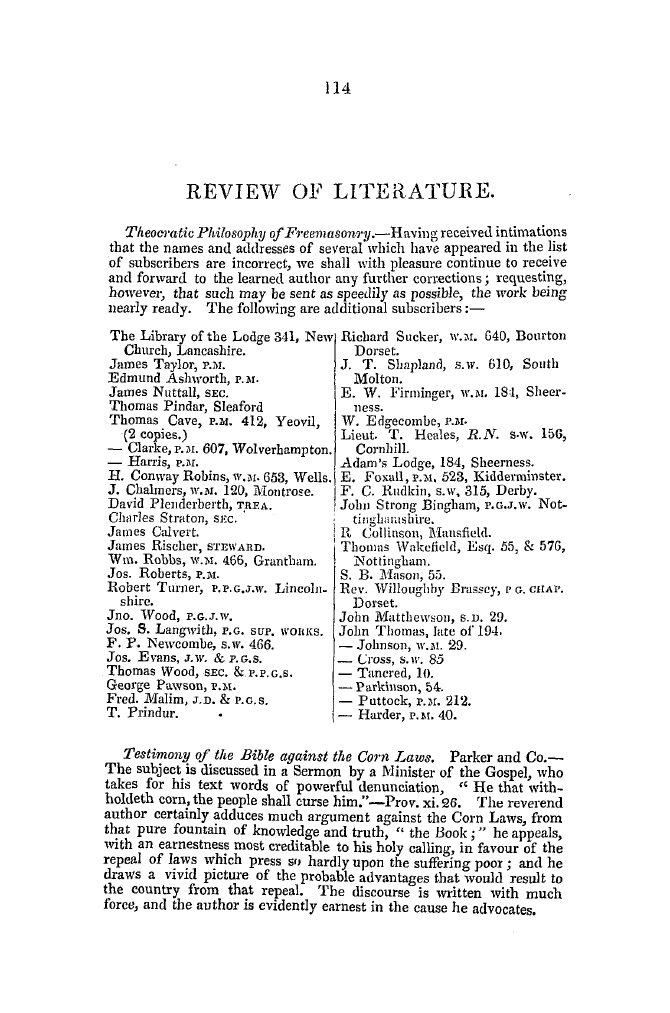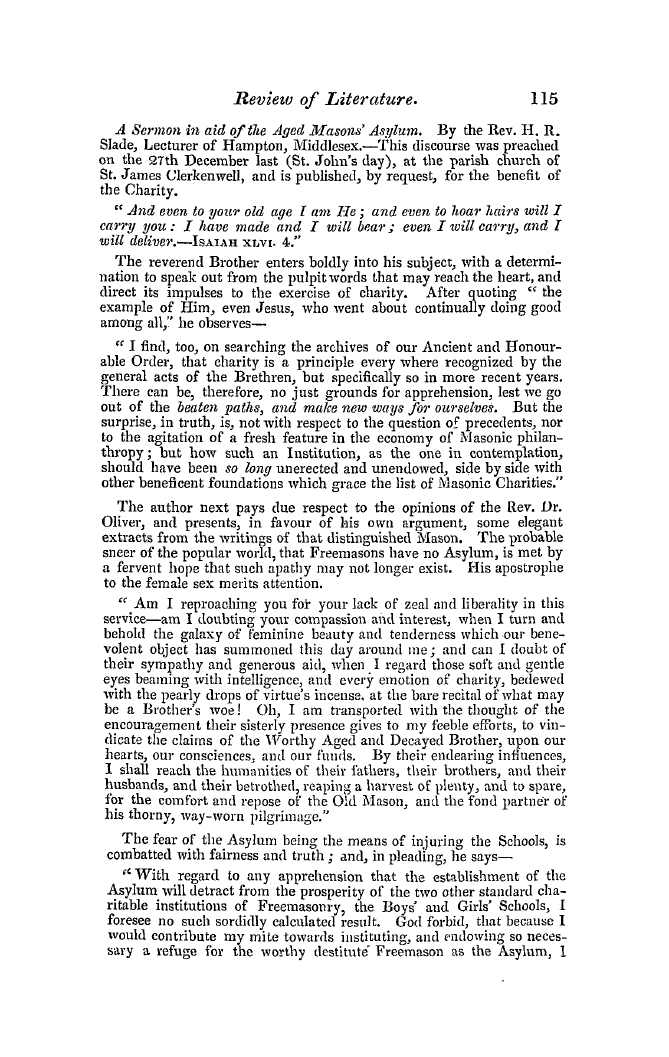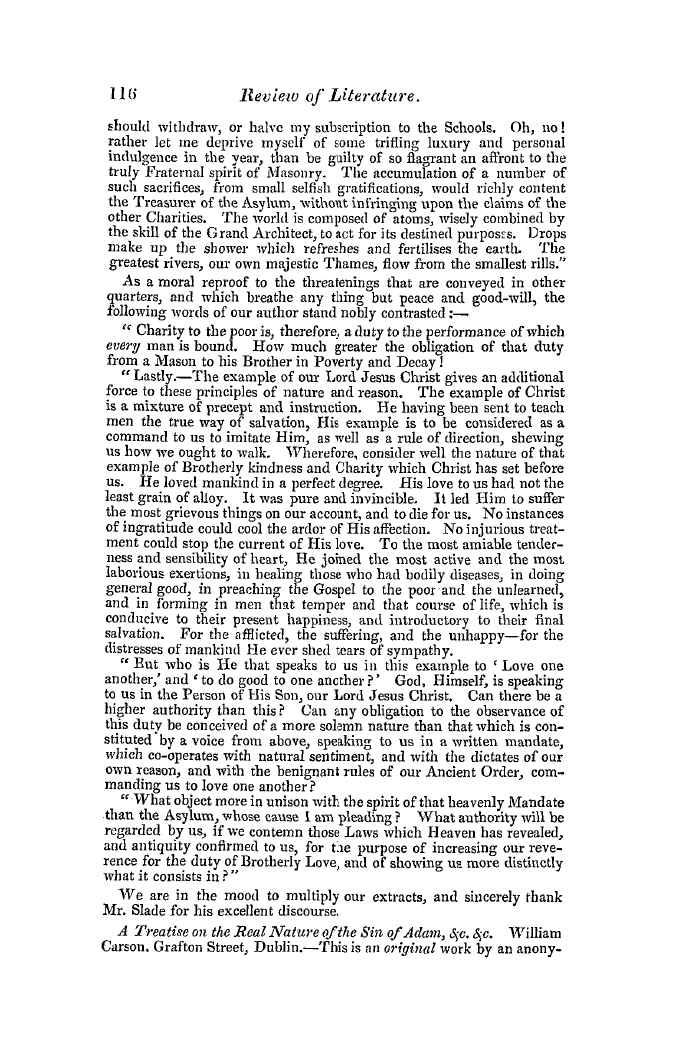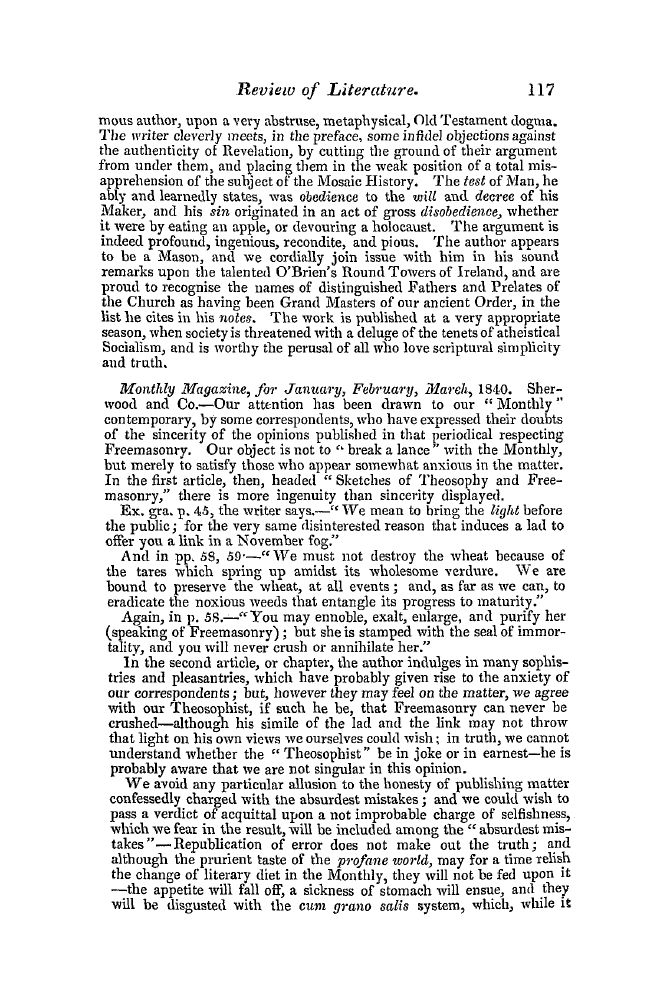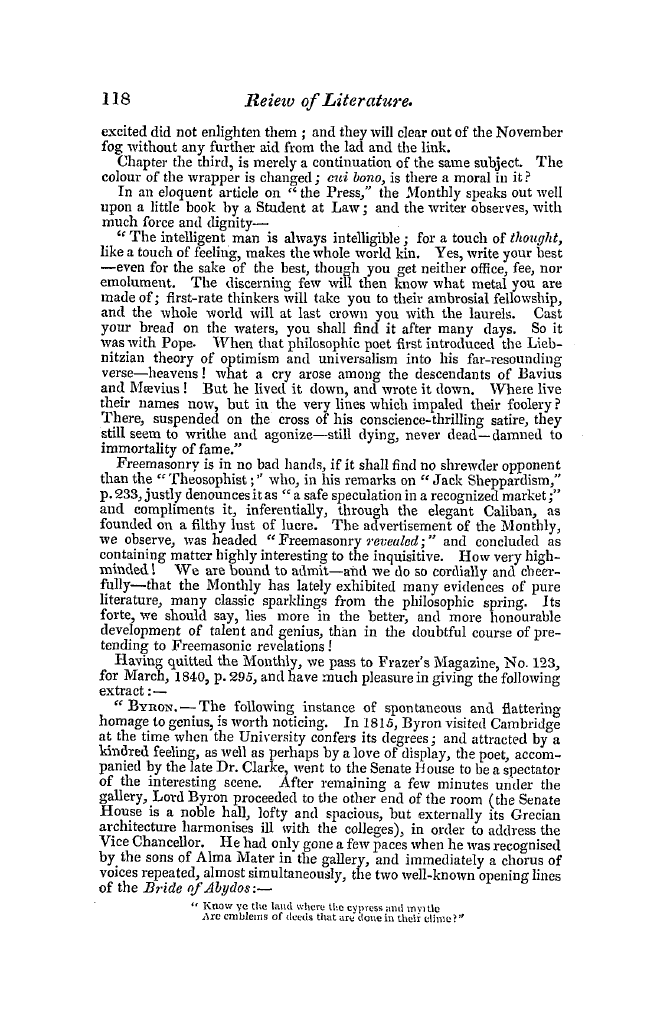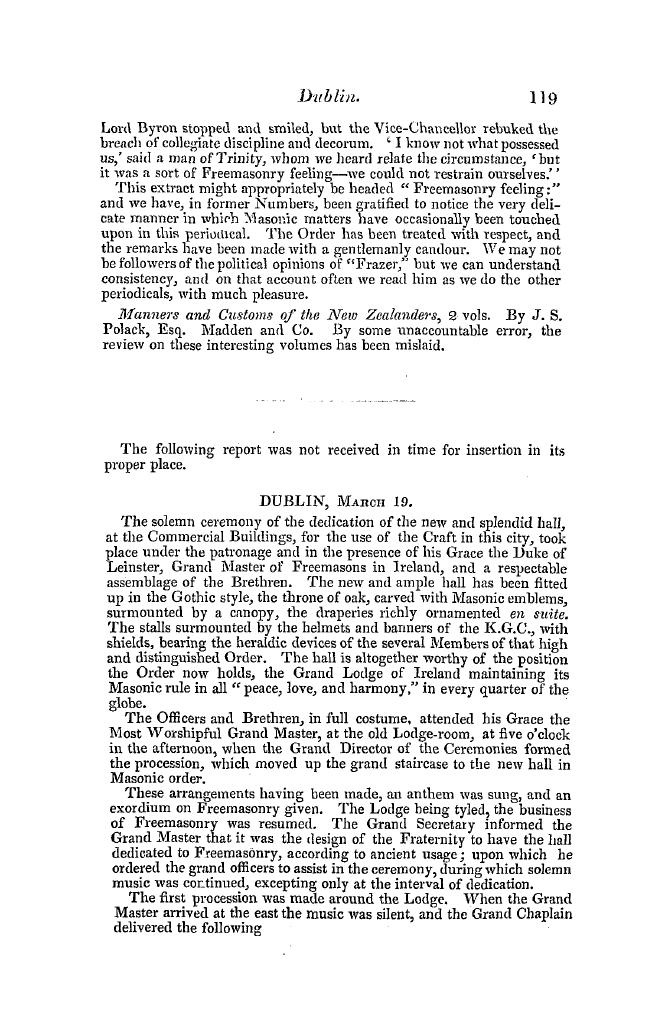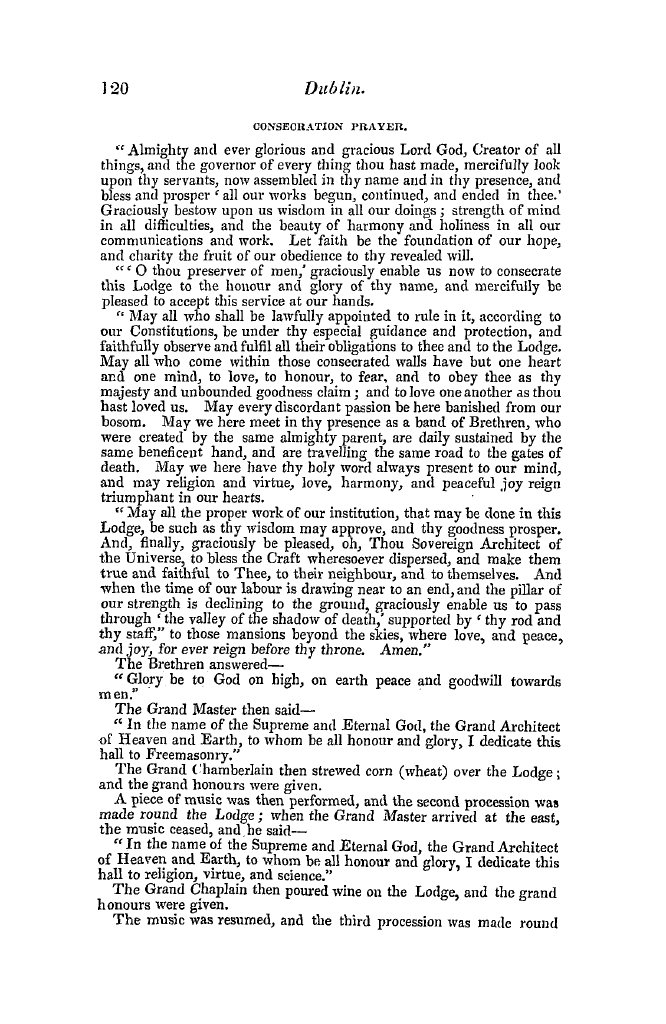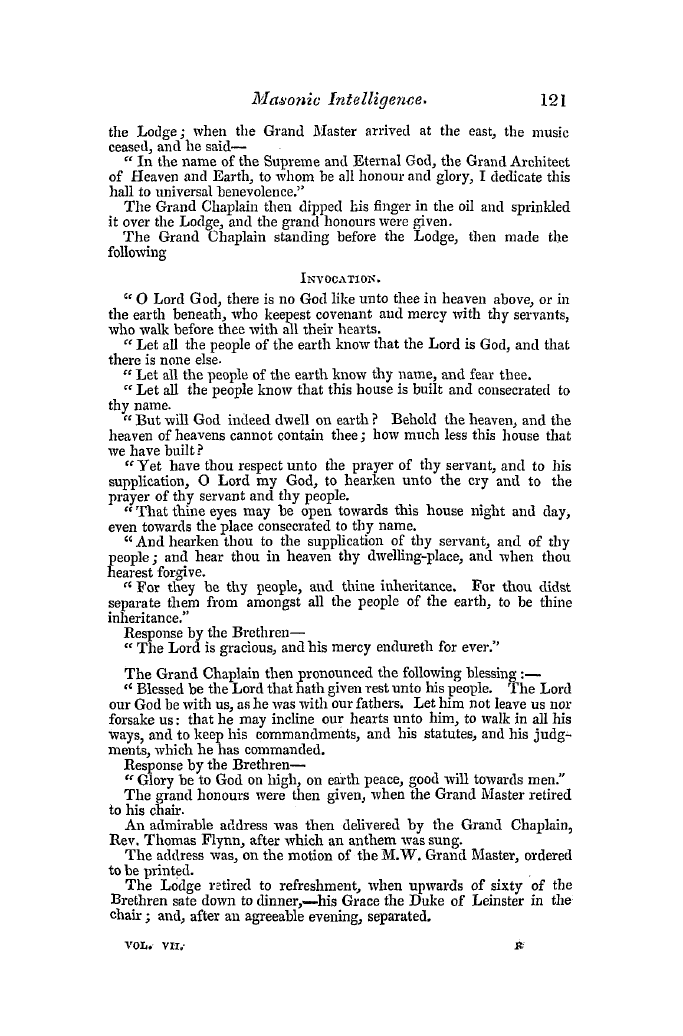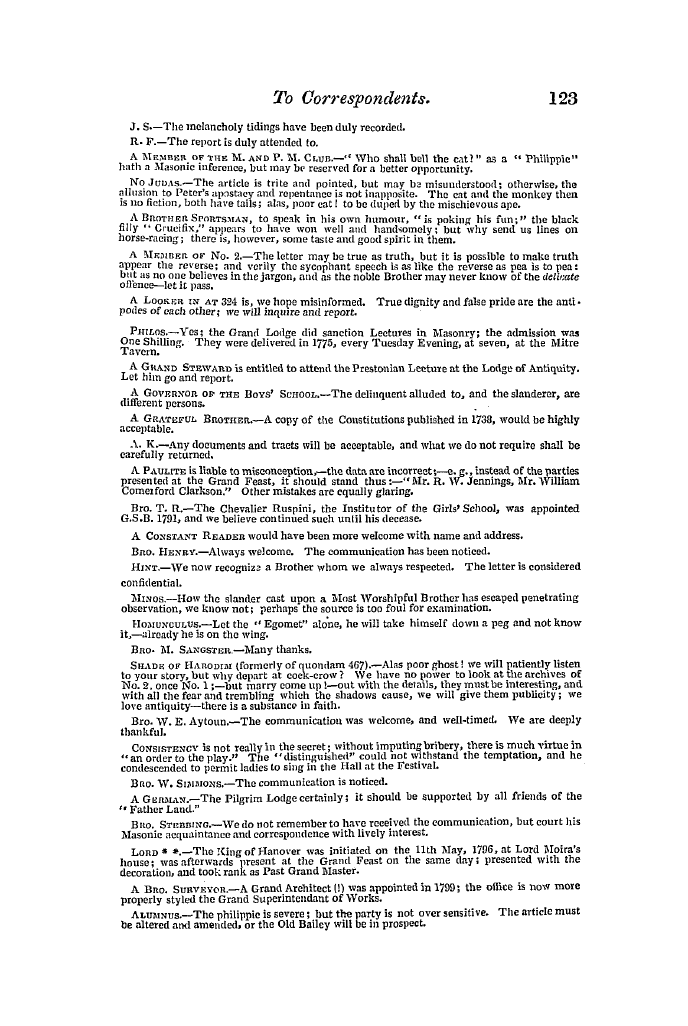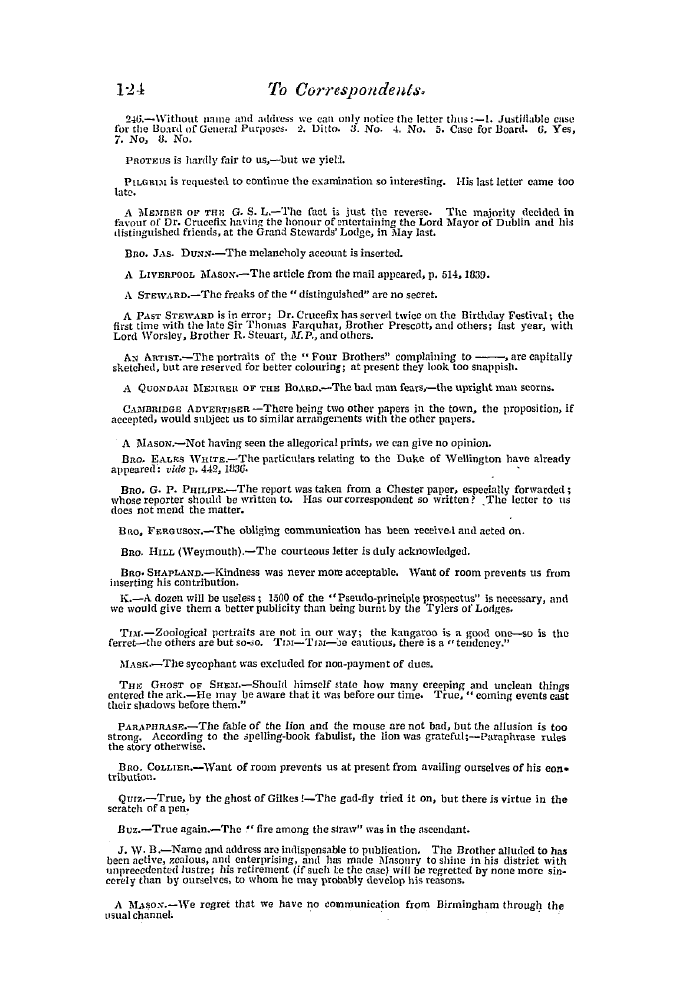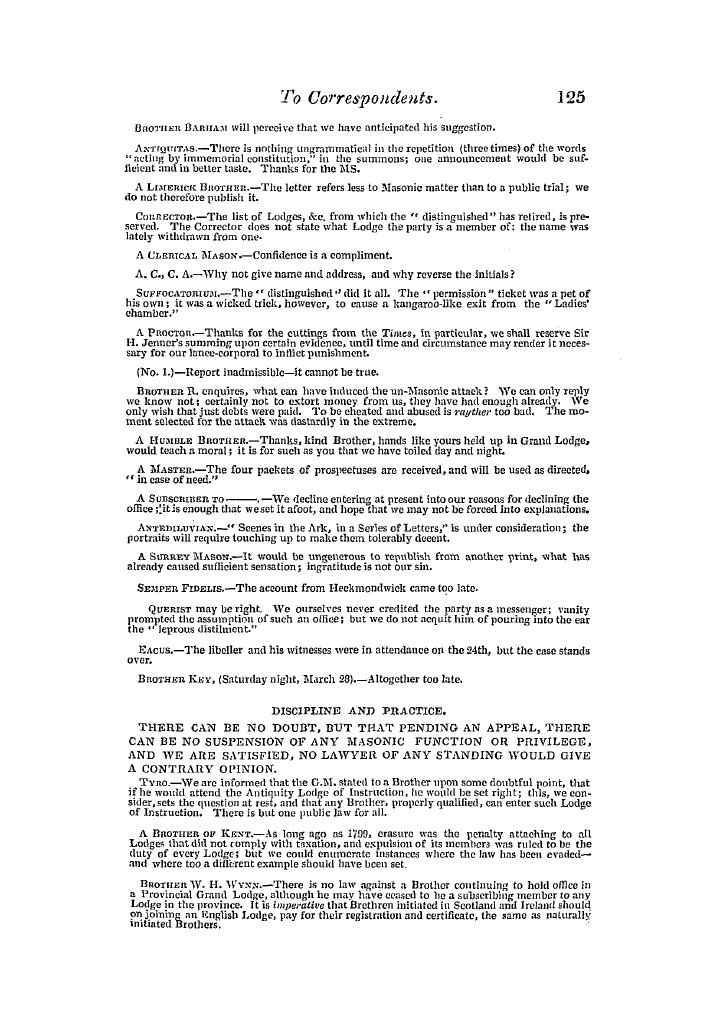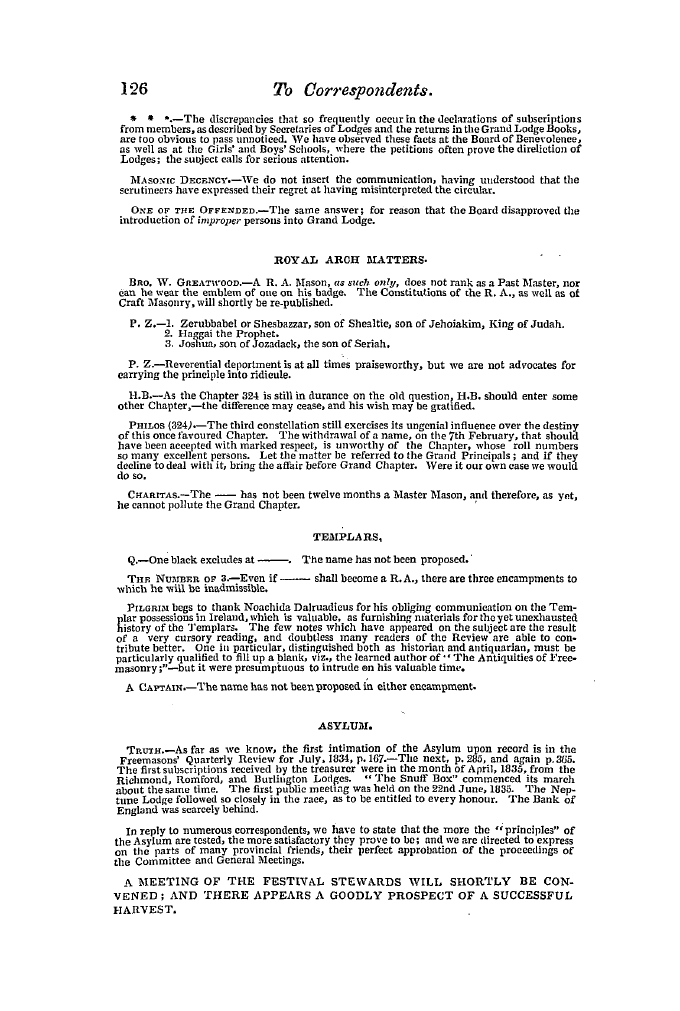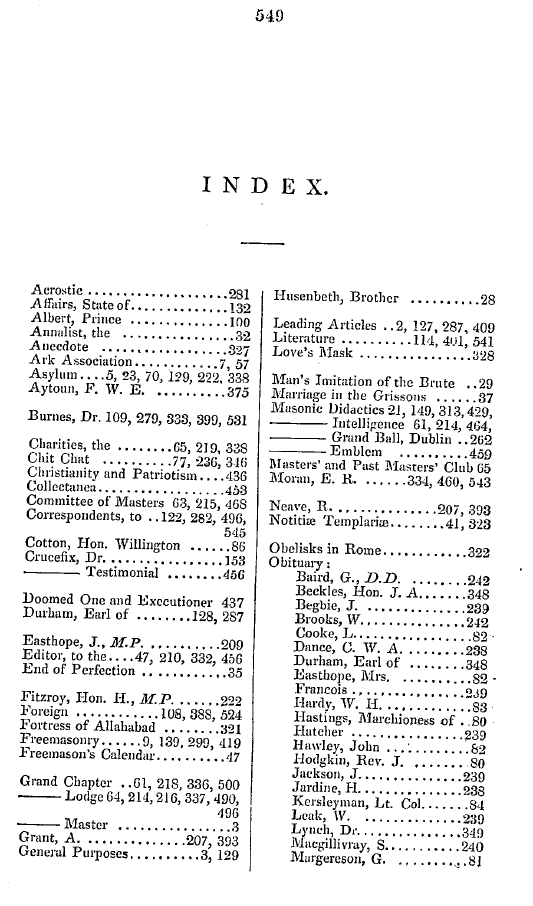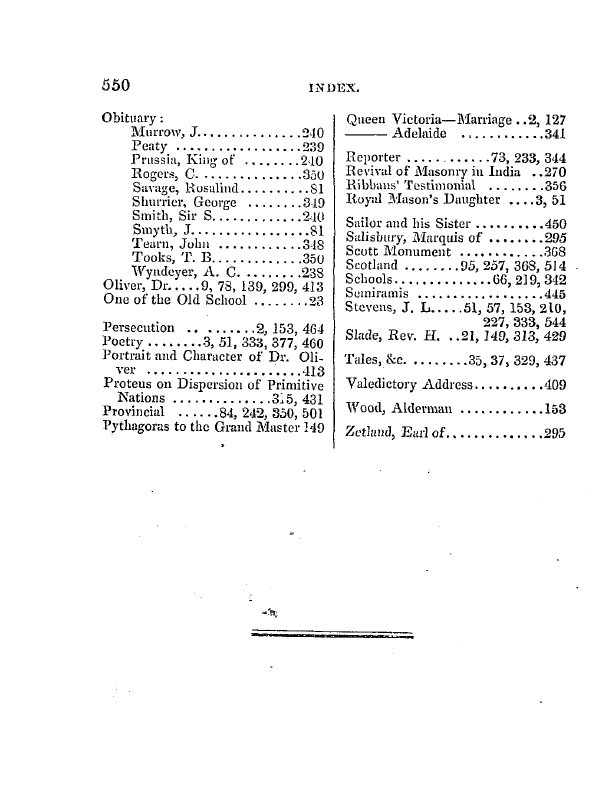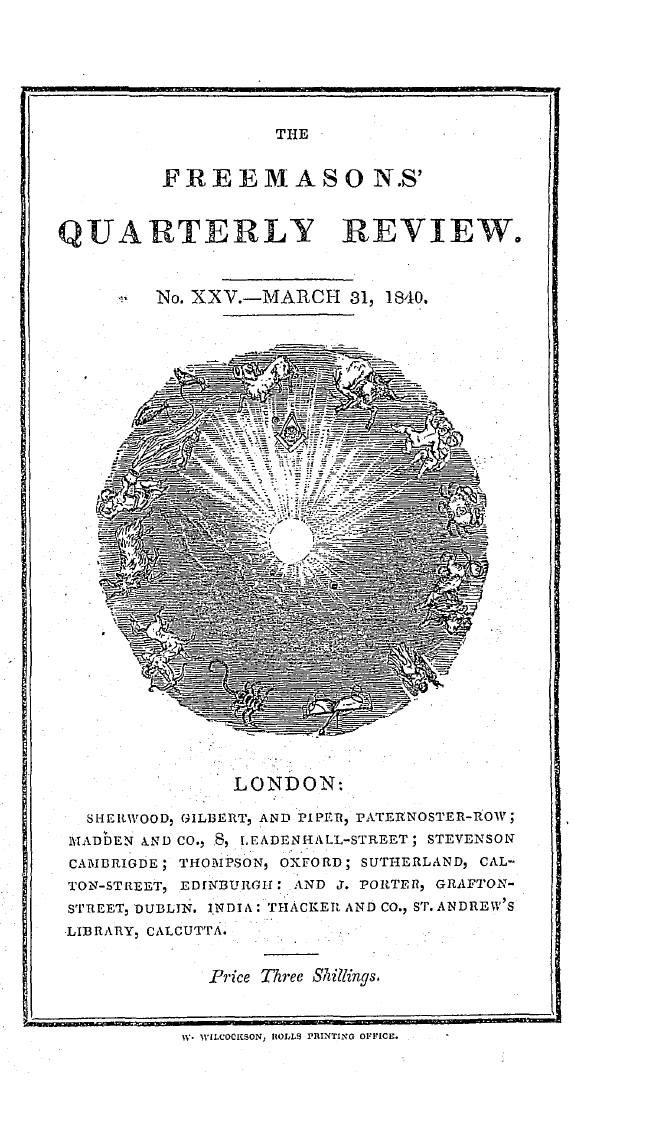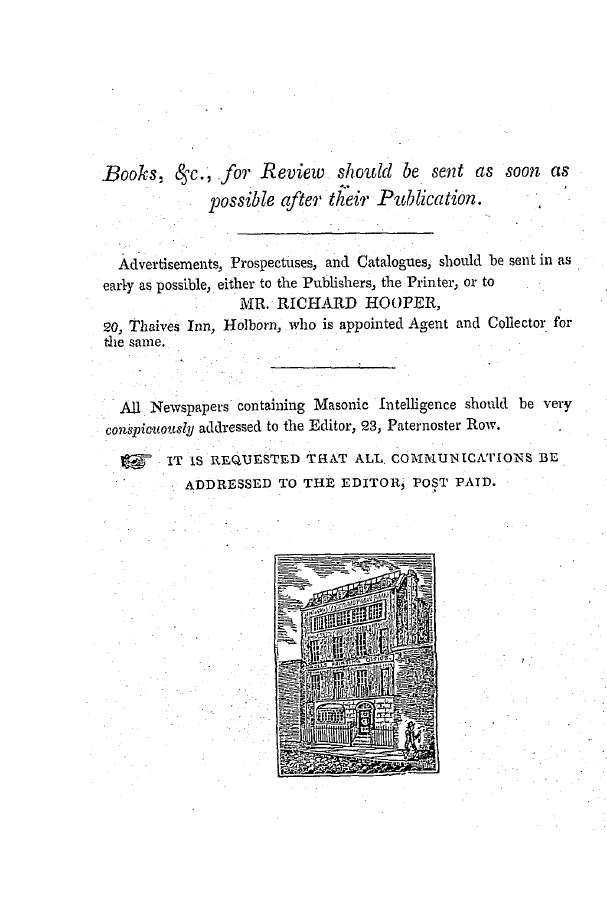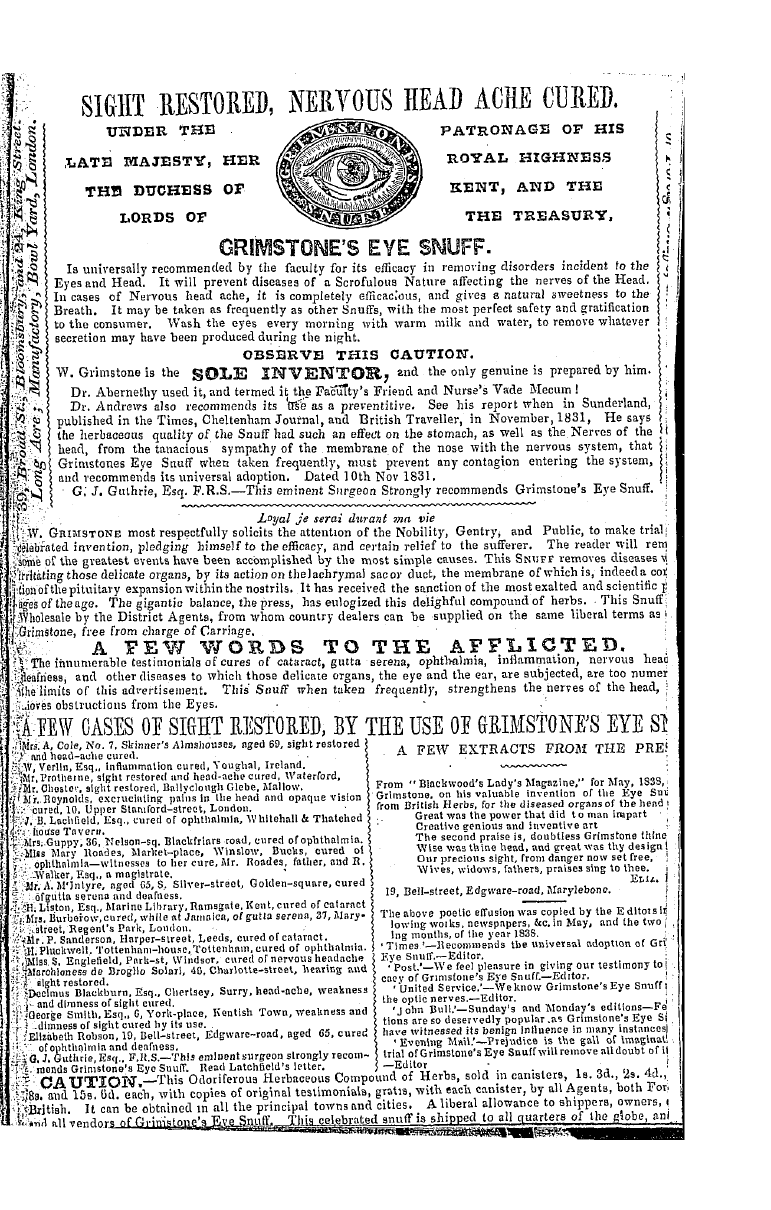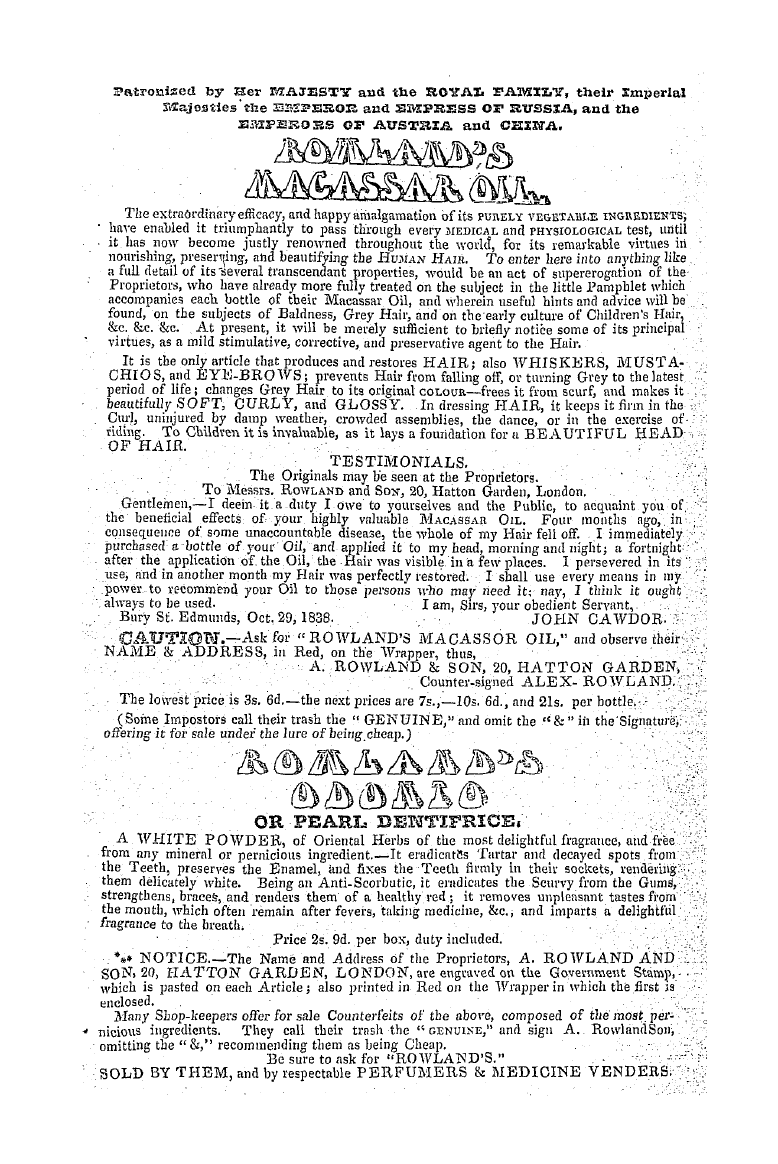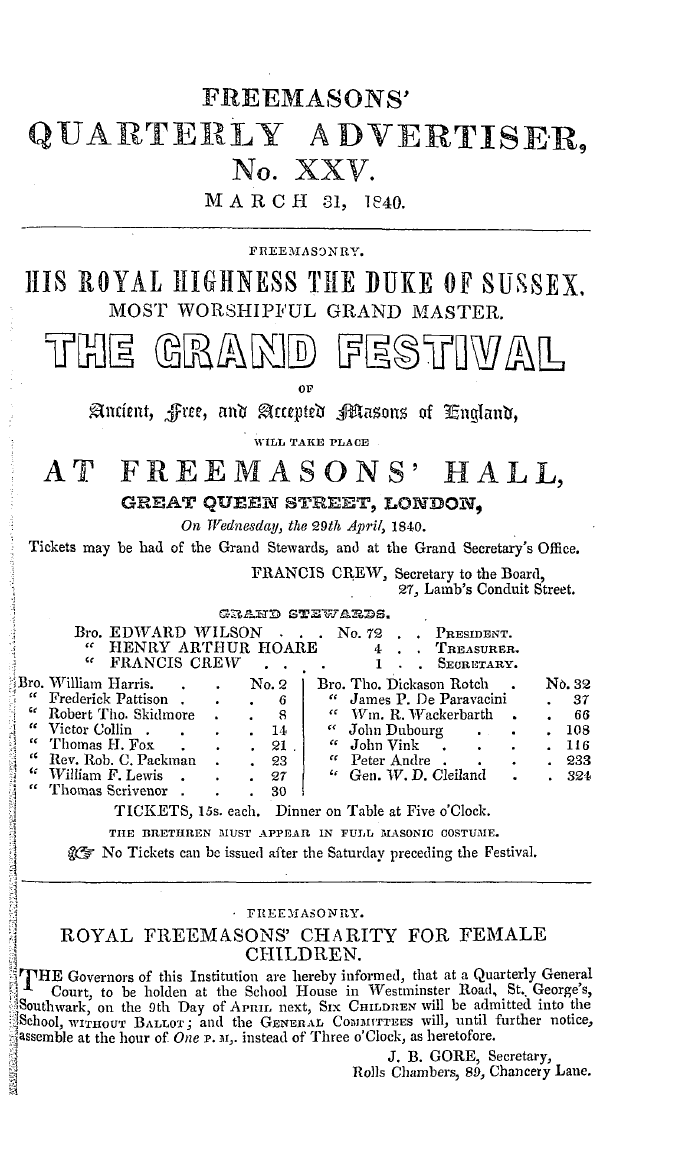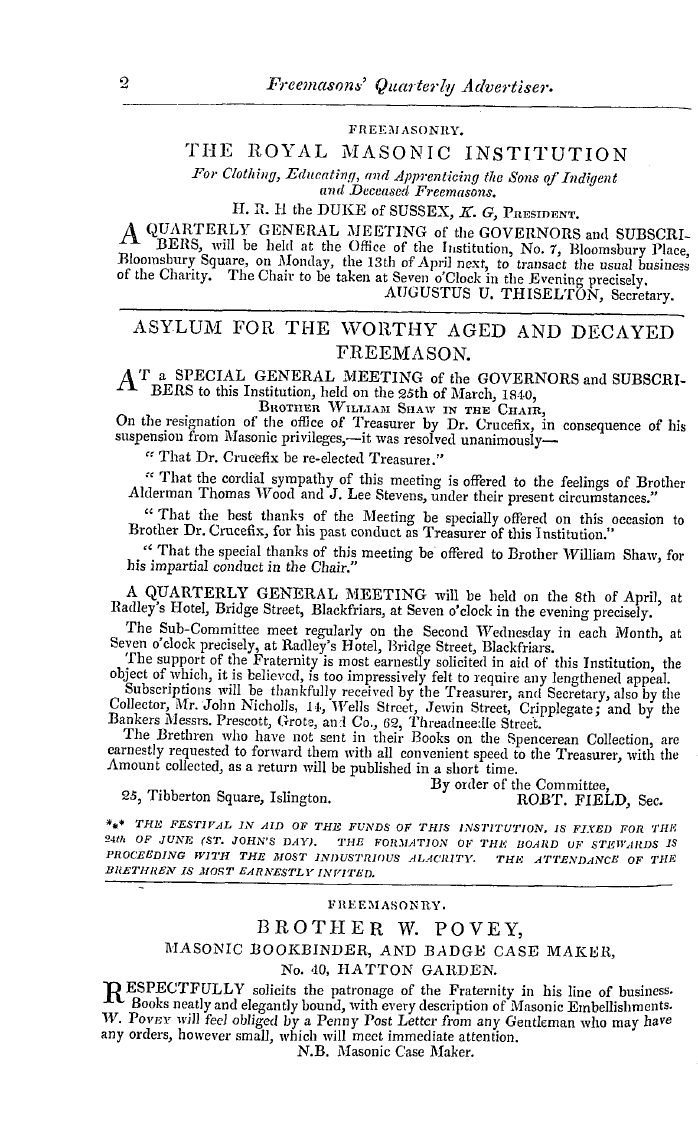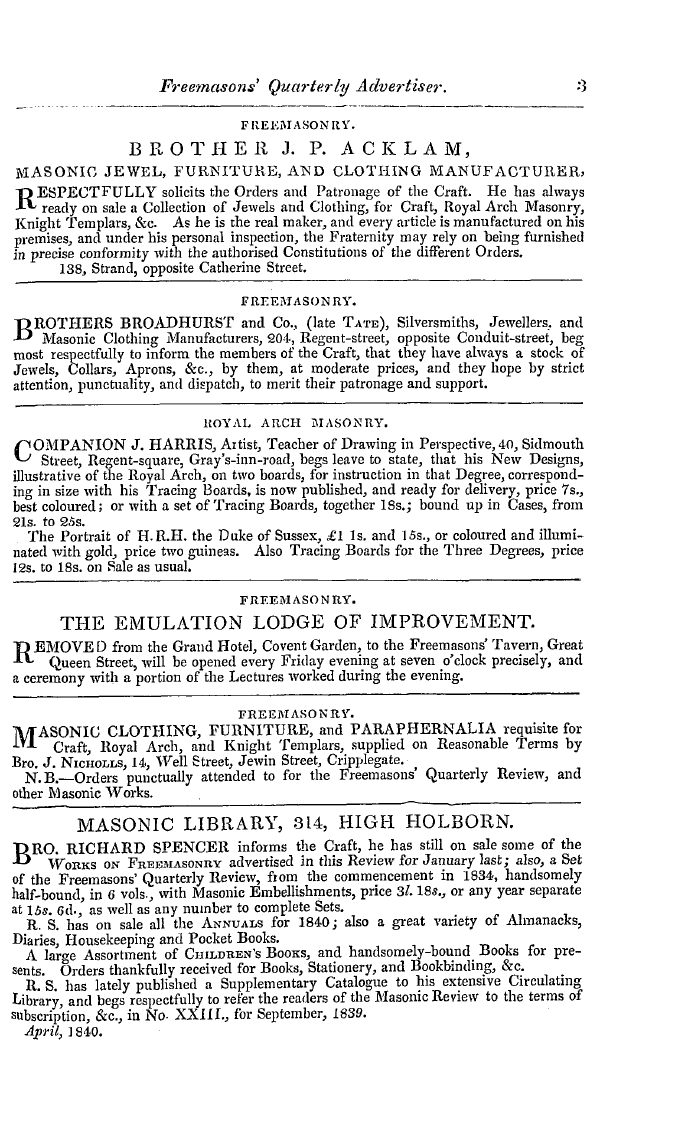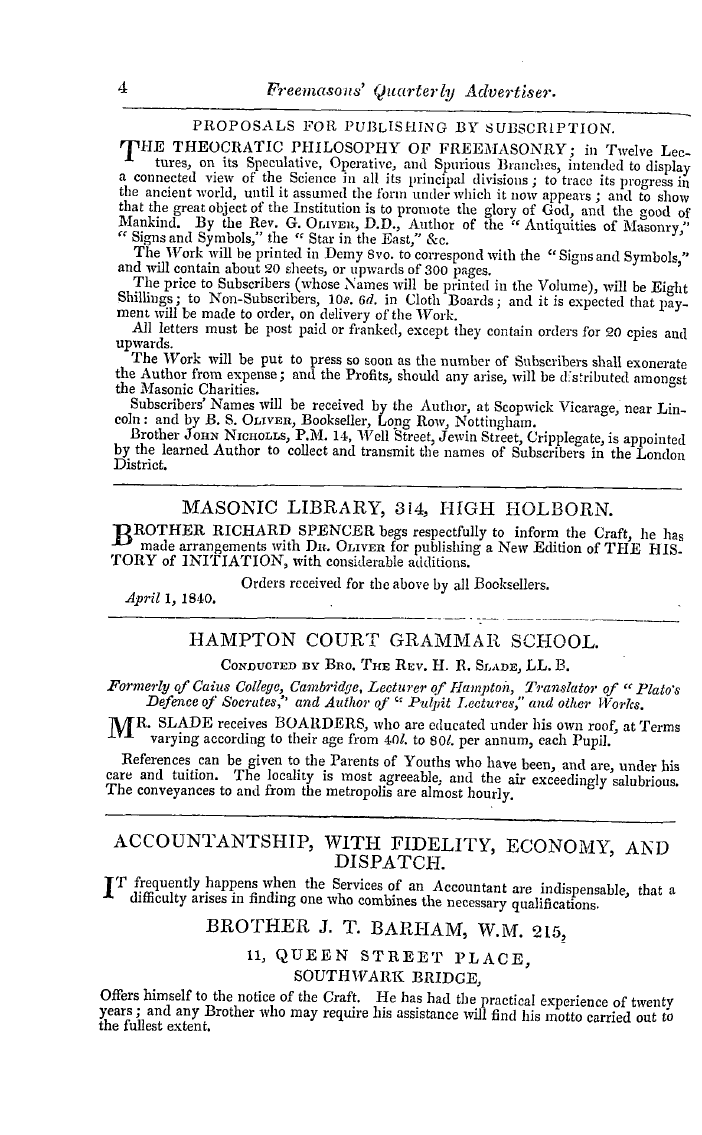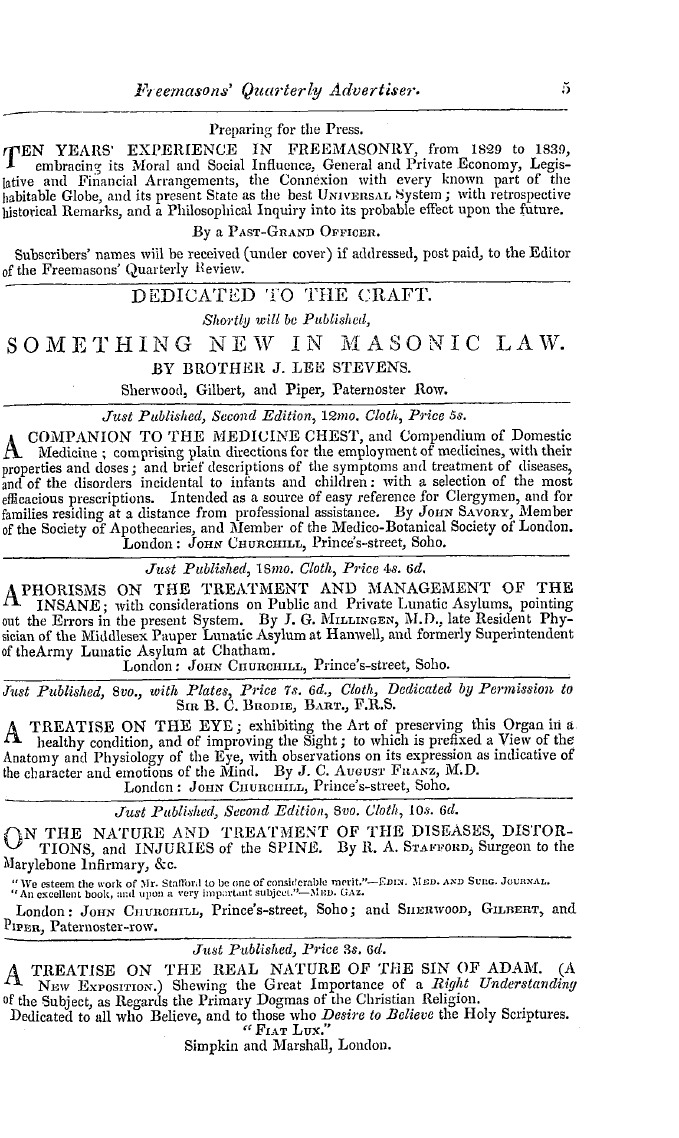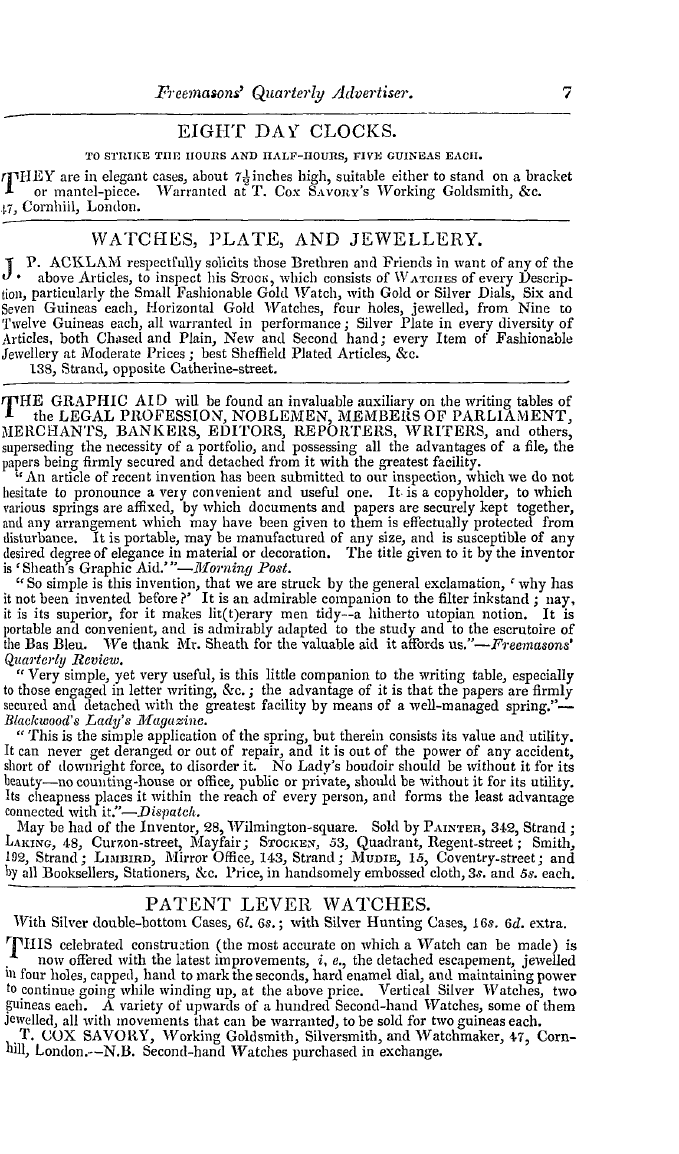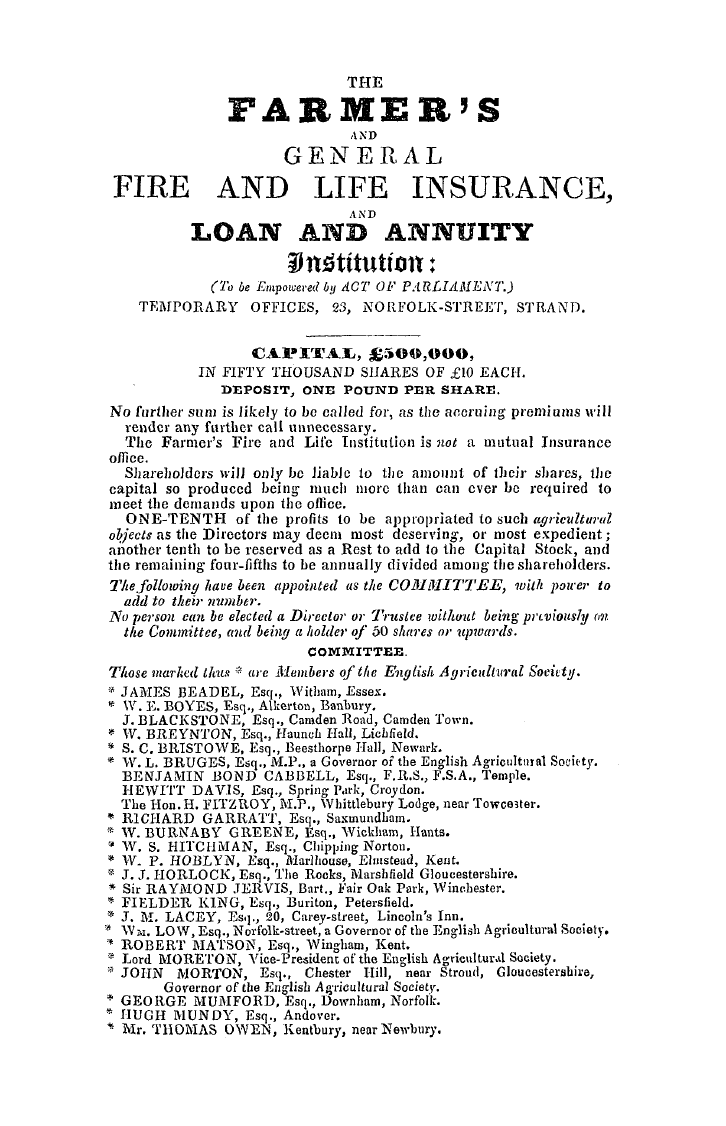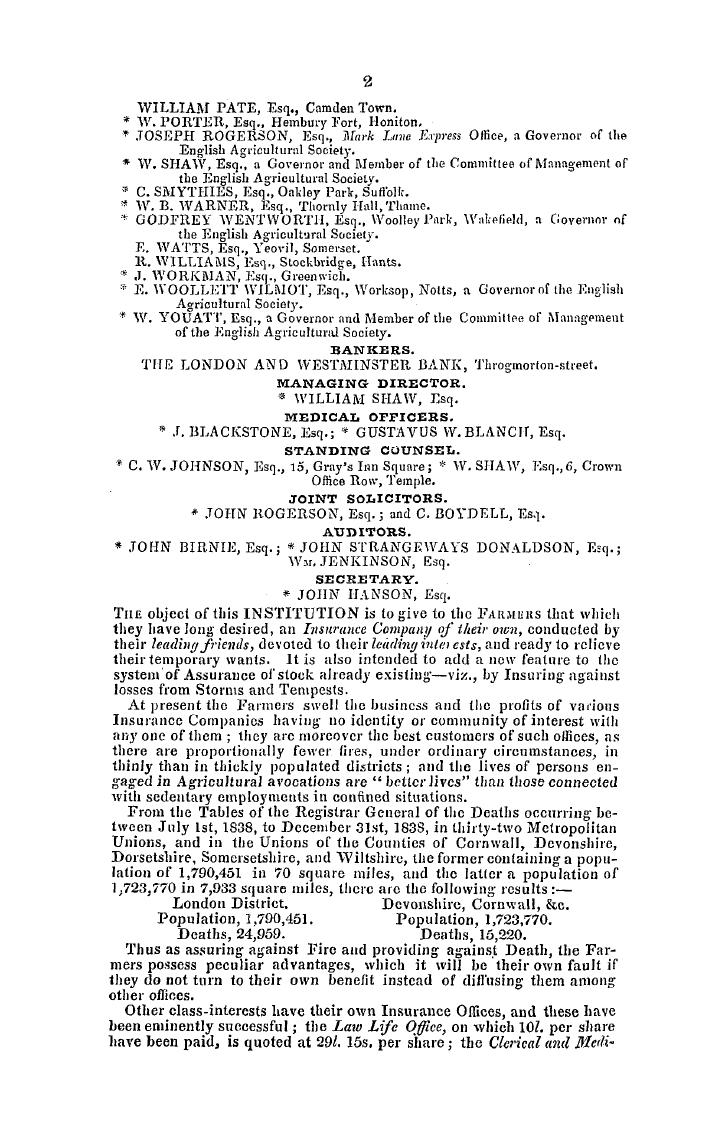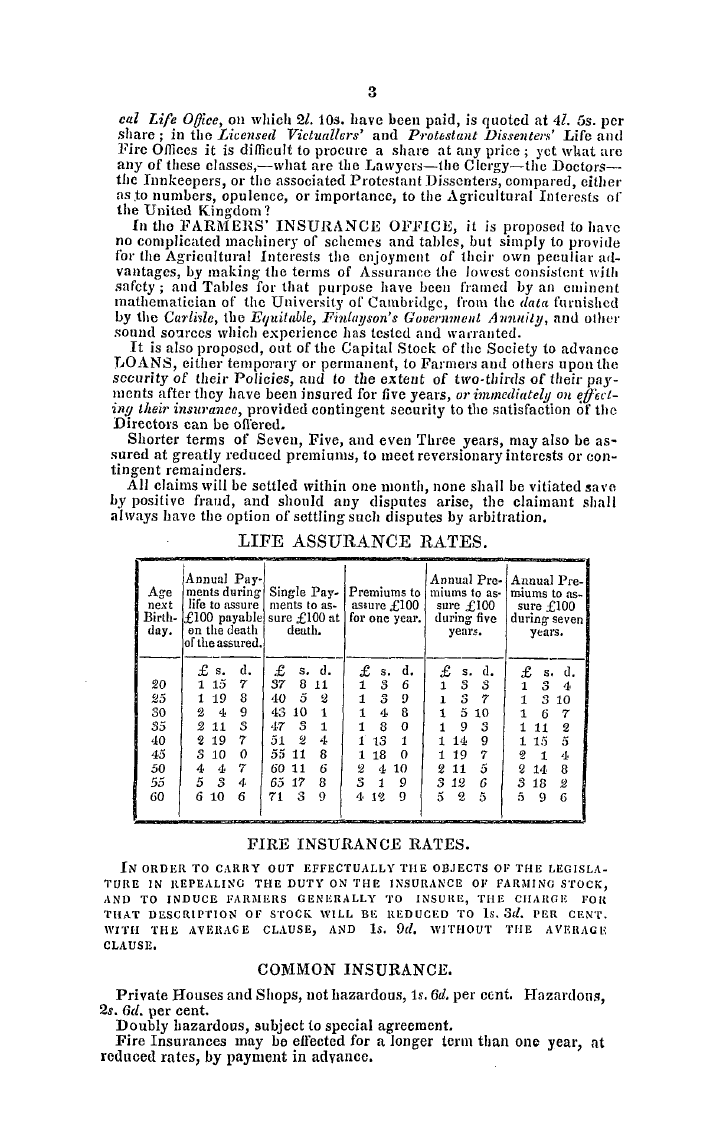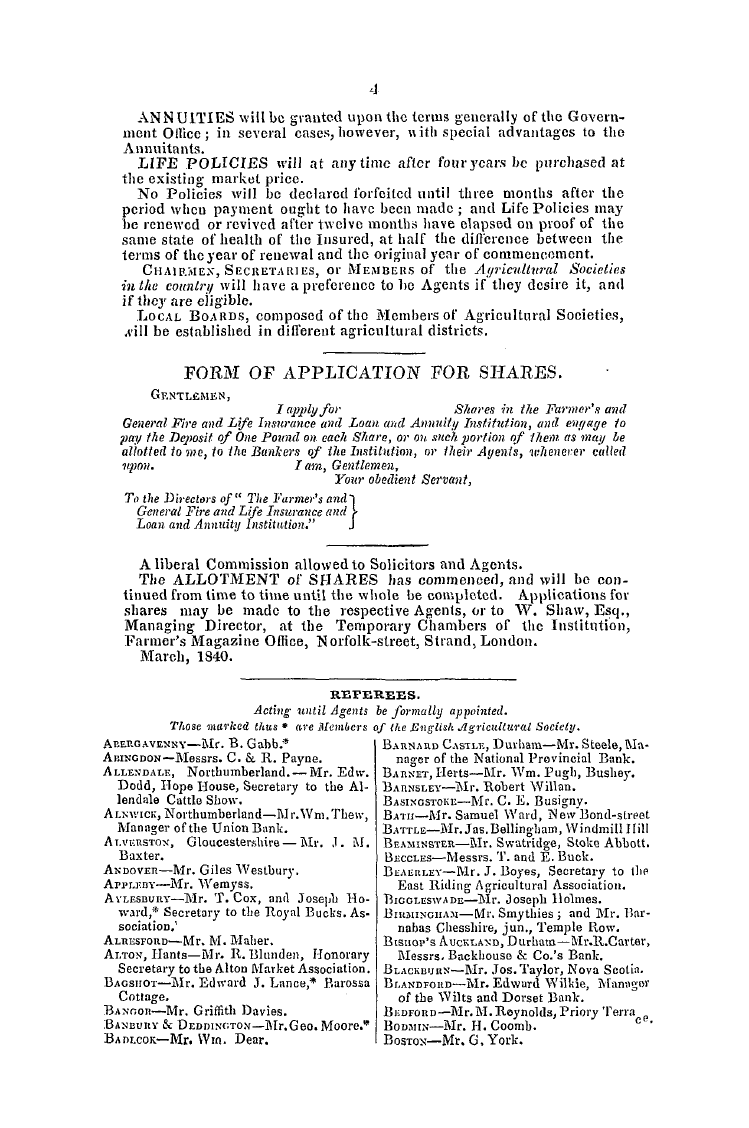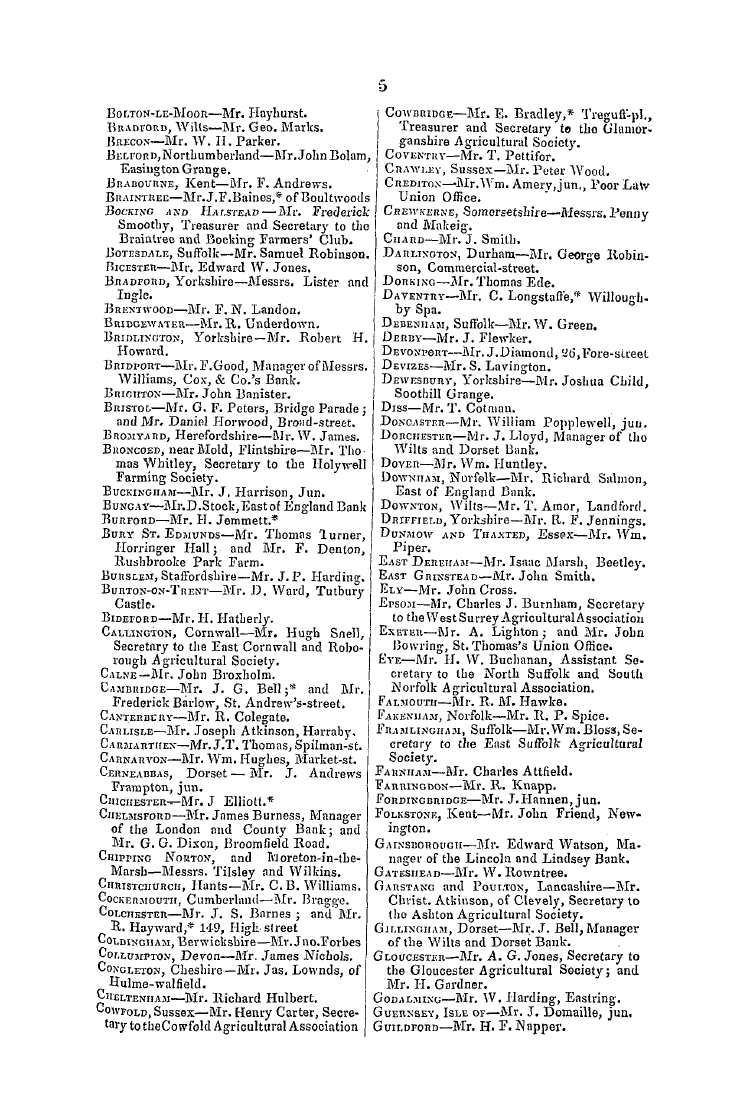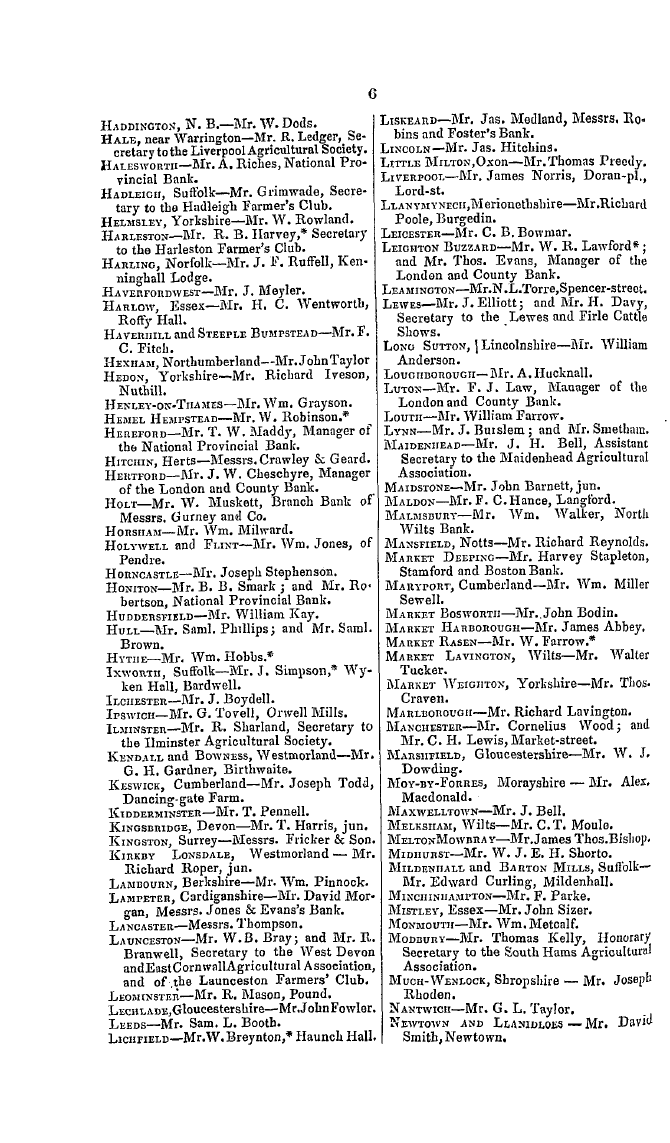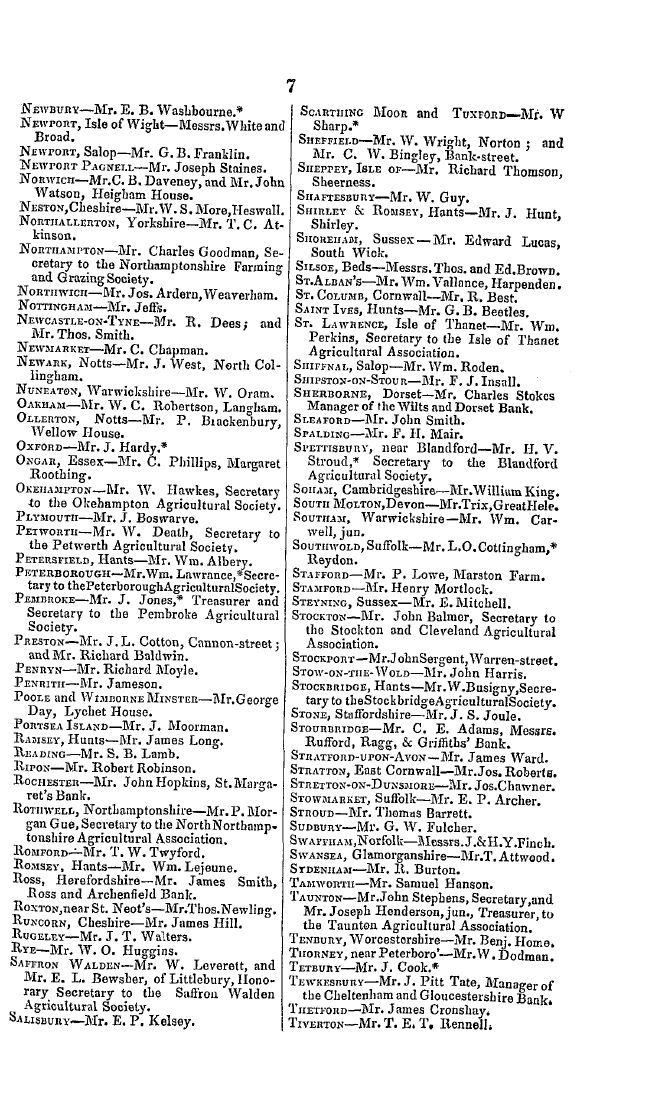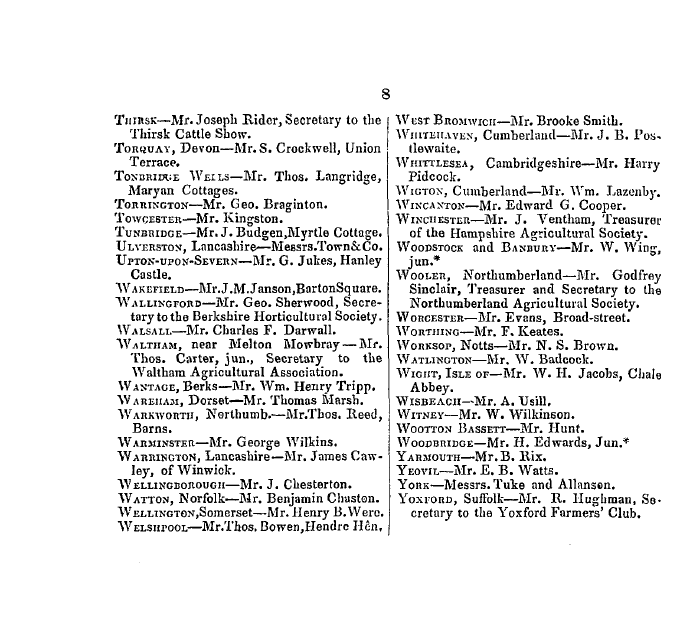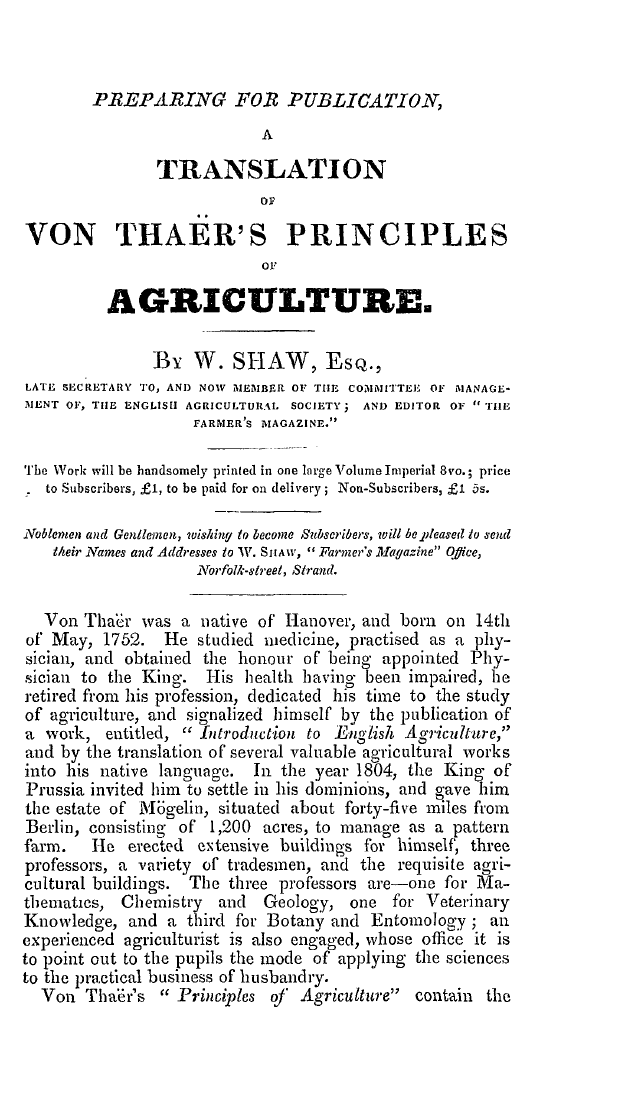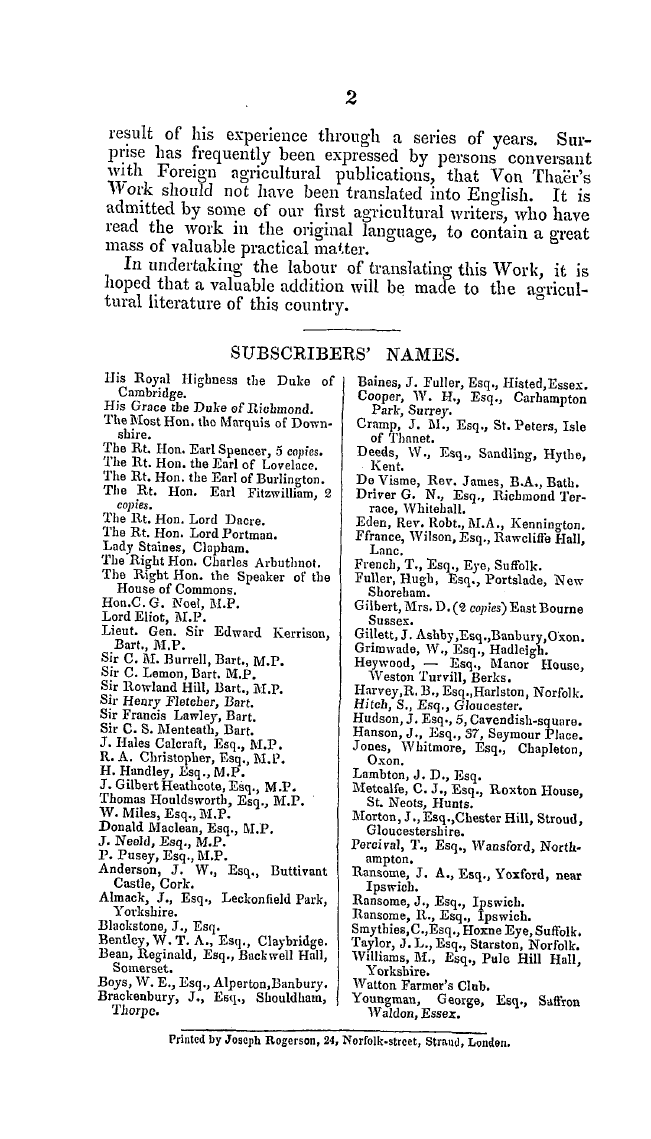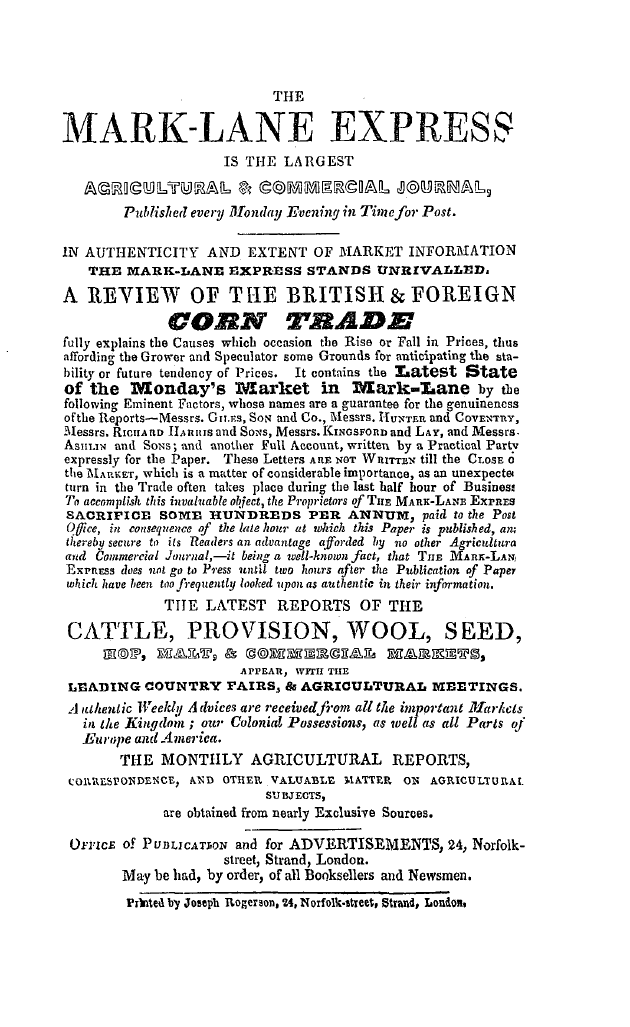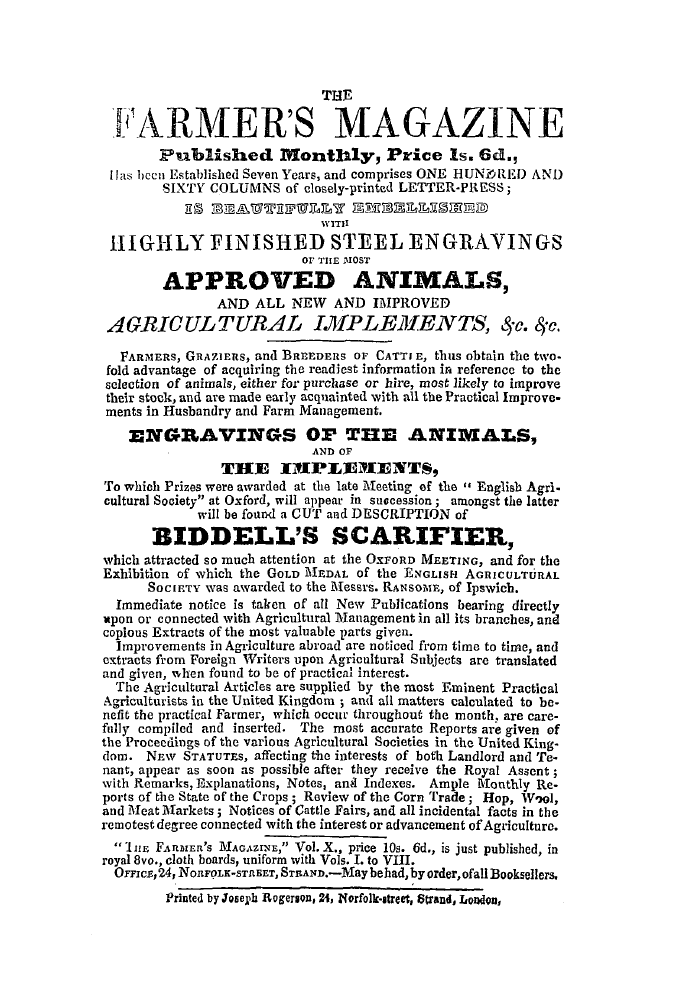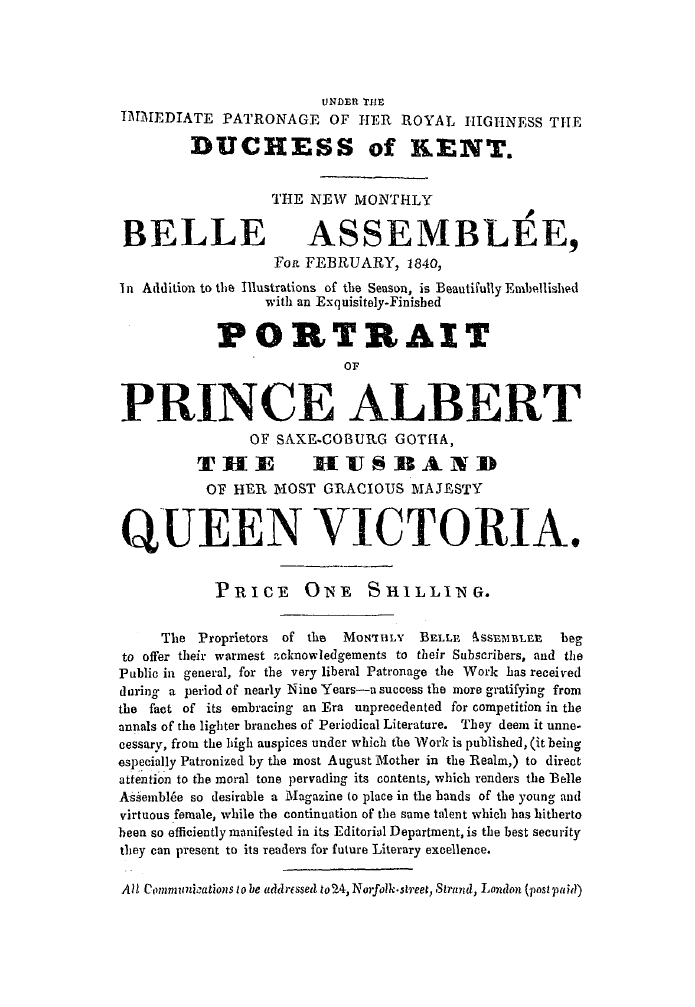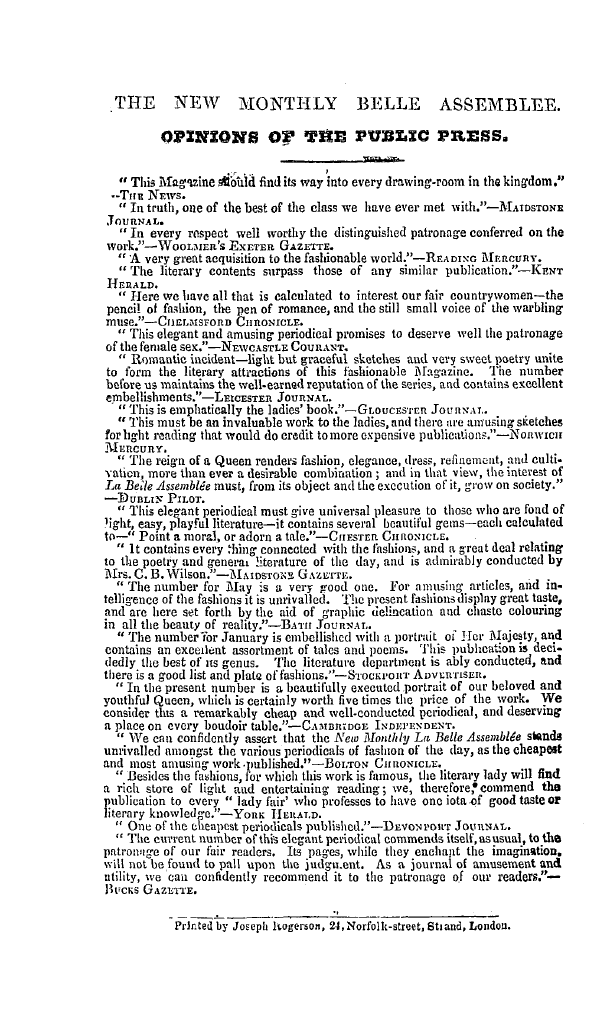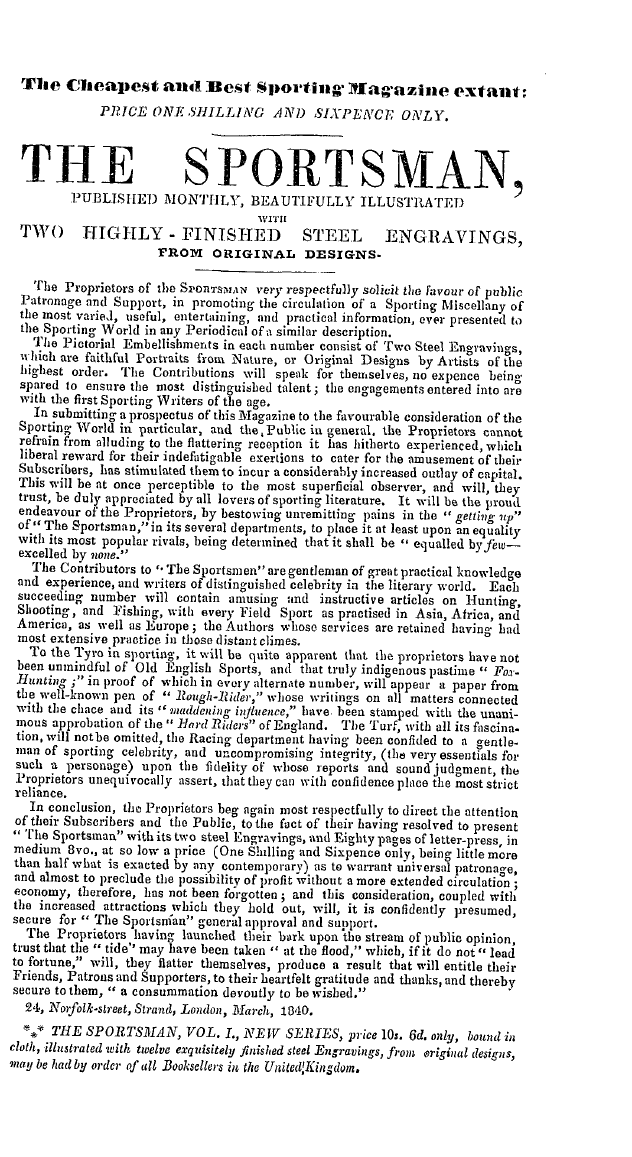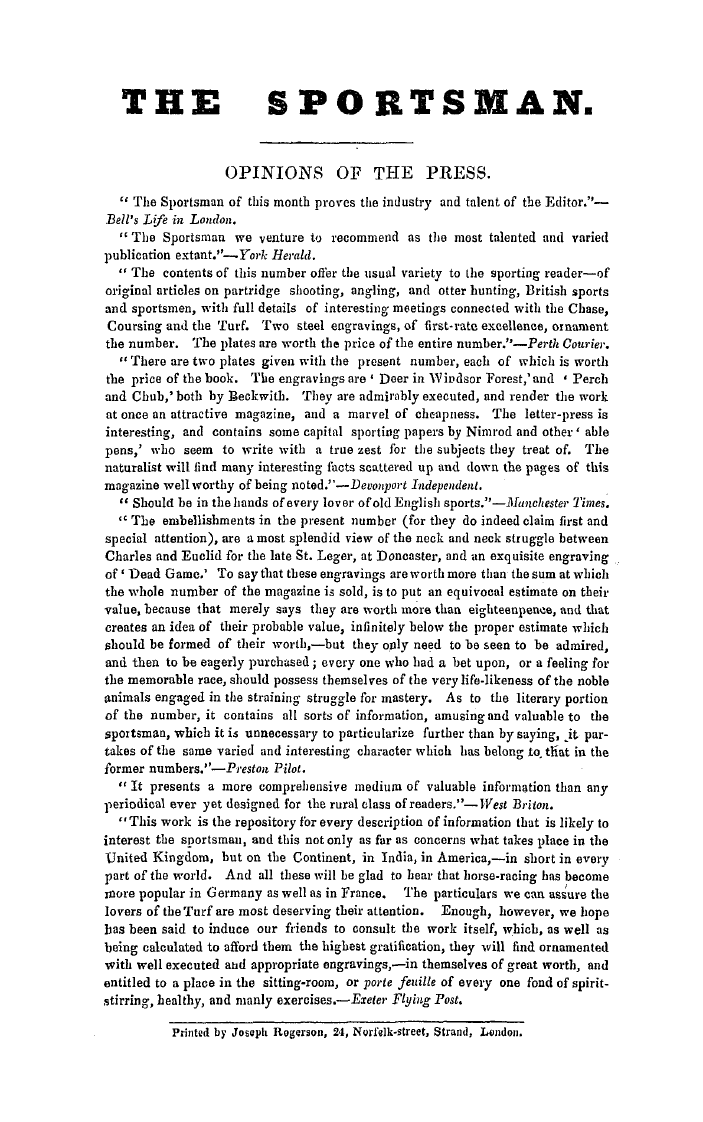-
Articles/Ads
Article NOTITAE TEMPLARIAE. ← Page 3 of 5 →
Note: This text has been automatically extracted via Optical Character Recognition (OCR) software.
Notitae Templariae.
reproached for their general laxness by a Bull of the Pope in 1208 , which probably furnished , along with other reports of the annalists , colour for the characters introduced into " Ivanhoe . " Philip , however , was a most worthy Master , and exerted himself to remove the cause of the papal reproaches , the chief of which , in the Pope ' s eye , seem to have been burying interdicted persons in their cemeteries , ancl receiving money from the affiliated . The order at this period to have
appear possessed castles and property in the Morea , near Ravenica , and at Thessalonica , and Negropont . They also obtained sundry estates and houses in Dalmatia and Sclavonia , by the favour of Stephen III ., King of Hungary , which were afterwards confirmed to them by Andrew II . WILLIAM DE CHARTRES succeeded to the Grand Mastership in the year 1217 . ^ He was the son of Milo , fourth Count of Bar-sur-Seine . whom we find mentioned among those French nobles who came to take
part in the siege of Damietta . The Christians having been driven from Jerusalem , so long the head quarters of the Knights , one of the first acts of the new Grand Master was to establish the Order in some fortified place , where he might defy the future attacks of the infidels . For this purpose he fixed upon a rocky point , named Atlit by the Arabs , situated on the sea coast betwixt Caiphas and Cesarea , where had formerly stood a building called by some the Tower of Destructionhy others the Castle
, of the Son of God—Castrum Filii Dei . In the formation of their new fortifications the Brethren of the Temple were fraternally aided by a number of intelligent pilgrims belonging to the Masonic classes , in compliment to whose important services the fortress was denominated the Castle of the Pilgrims . Walter , Count of Avesnes , also contributed to the work , as a speculative if not a practical architect ; and several of tlie
Brotherhood of the Teutonic Order lent their skill and assistance in the building . By the united labours of these various Brethren an almost impregnable citadel was erected , on a scale of grandeur befitting the chief seat of the Order . The Cardinal De Vitri , who describes its imposing appearance ancl skilful construction—its ramparts and towers—its barracks ancl platforms—its palace ancl oratory—the fountains that played around—the fish-ponds that were formed within it—concludes with the
observation , " hujus cedificii prima est utilitas , quod conventus Templariorum eductus de peccatrice et omni spurcitia plena civitate Ac-con in hujus castri prasidio residebit usque ad reparationem murorum Ilierusalem . " The latter part of this prediction was , however , never to be fulfilled , and the proud keep ofthe Pilgrims was itself fated to be levelled with the dust by Paynim hands , after the final fall of Acre . _ De Chartres was now called on to follow John cle Brienne , the elected
king of Jerusalem , to the Egyptian shores , where the Grand Master found his noble father arrived from France with a number of crusaders . One of the first exploits of the Christians was storming a tower which stood in the river Nile , as an out-work to the town of Damietta . The prisoners taken in this affair , when led into the camp of the crusaders , requested earnestl y to be shown the men clothed in white who had conquered them ; but historians pretend that such could be
no persons found ; and add , that tbe-crusaders then saw that the Lord had sent his angels among them to attack the tower . ( Stebbing ' s Crusades , vol . ii , p . 276 ' ) . It is almost unnecessary to explain that the warriors clad in white , were the Kni ghts Templars . The gallant Grand Master , William of Charlies , perished during the investment of Damietta ; on what particular occasion is unknown , but it must have been in some of tlie carlici operations .
Note: This text has been automatically extracted via Optical Character Recognition (OCR) software.
Notitae Templariae.
reproached for their general laxness by a Bull of the Pope in 1208 , which probably furnished , along with other reports of the annalists , colour for the characters introduced into " Ivanhoe . " Philip , however , was a most worthy Master , and exerted himself to remove the cause of the papal reproaches , the chief of which , in the Pope ' s eye , seem to have been burying interdicted persons in their cemeteries , ancl receiving money from the affiliated . The order at this period to have
appear possessed castles and property in the Morea , near Ravenica , and at Thessalonica , and Negropont . They also obtained sundry estates and houses in Dalmatia and Sclavonia , by the favour of Stephen III ., King of Hungary , which were afterwards confirmed to them by Andrew II . WILLIAM DE CHARTRES succeeded to the Grand Mastership in the year 1217 . ^ He was the son of Milo , fourth Count of Bar-sur-Seine . whom we find mentioned among those French nobles who came to take
part in the siege of Damietta . The Christians having been driven from Jerusalem , so long the head quarters of the Knights , one of the first acts of the new Grand Master was to establish the Order in some fortified place , where he might defy the future attacks of the infidels . For this purpose he fixed upon a rocky point , named Atlit by the Arabs , situated on the sea coast betwixt Caiphas and Cesarea , where had formerly stood a building called by some the Tower of Destructionhy others the Castle
, of the Son of God—Castrum Filii Dei . In the formation of their new fortifications the Brethren of the Temple were fraternally aided by a number of intelligent pilgrims belonging to the Masonic classes , in compliment to whose important services the fortress was denominated the Castle of the Pilgrims . Walter , Count of Avesnes , also contributed to the work , as a speculative if not a practical architect ; and several of tlie
Brotherhood of the Teutonic Order lent their skill and assistance in the building . By the united labours of these various Brethren an almost impregnable citadel was erected , on a scale of grandeur befitting the chief seat of the Order . The Cardinal De Vitri , who describes its imposing appearance ancl skilful construction—its ramparts and towers—its barracks ancl platforms—its palace ancl oratory—the fountains that played around—the fish-ponds that were formed within it—concludes with the
observation , " hujus cedificii prima est utilitas , quod conventus Templariorum eductus de peccatrice et omni spurcitia plena civitate Ac-con in hujus castri prasidio residebit usque ad reparationem murorum Ilierusalem . " The latter part of this prediction was , however , never to be fulfilled , and the proud keep ofthe Pilgrims was itself fated to be levelled with the dust by Paynim hands , after the final fall of Acre . _ De Chartres was now called on to follow John cle Brienne , the elected
king of Jerusalem , to the Egyptian shores , where the Grand Master found his noble father arrived from France with a number of crusaders . One of the first exploits of the Christians was storming a tower which stood in the river Nile , as an out-work to the town of Damietta . The prisoners taken in this affair , when led into the camp of the crusaders , requested earnestl y to be shown the men clothed in white who had conquered them ; but historians pretend that such could be
no persons found ; and add , that tbe-crusaders then saw that the Lord had sent his angels among them to attack the tower . ( Stebbing ' s Crusades , vol . ii , p . 276 ' ) . It is almost unnecessary to explain that the warriors clad in white , were the Kni ghts Templars . The gallant Grand Master , William of Charlies , perished during the investment of Damietta ; on what particular occasion is unknown , but it must have been in some of tlie carlici operations .


























































